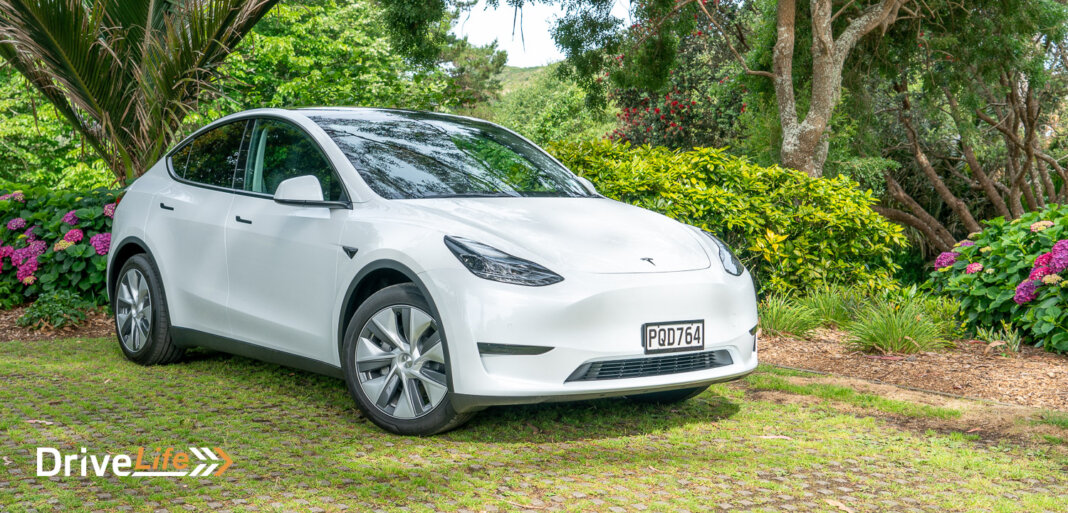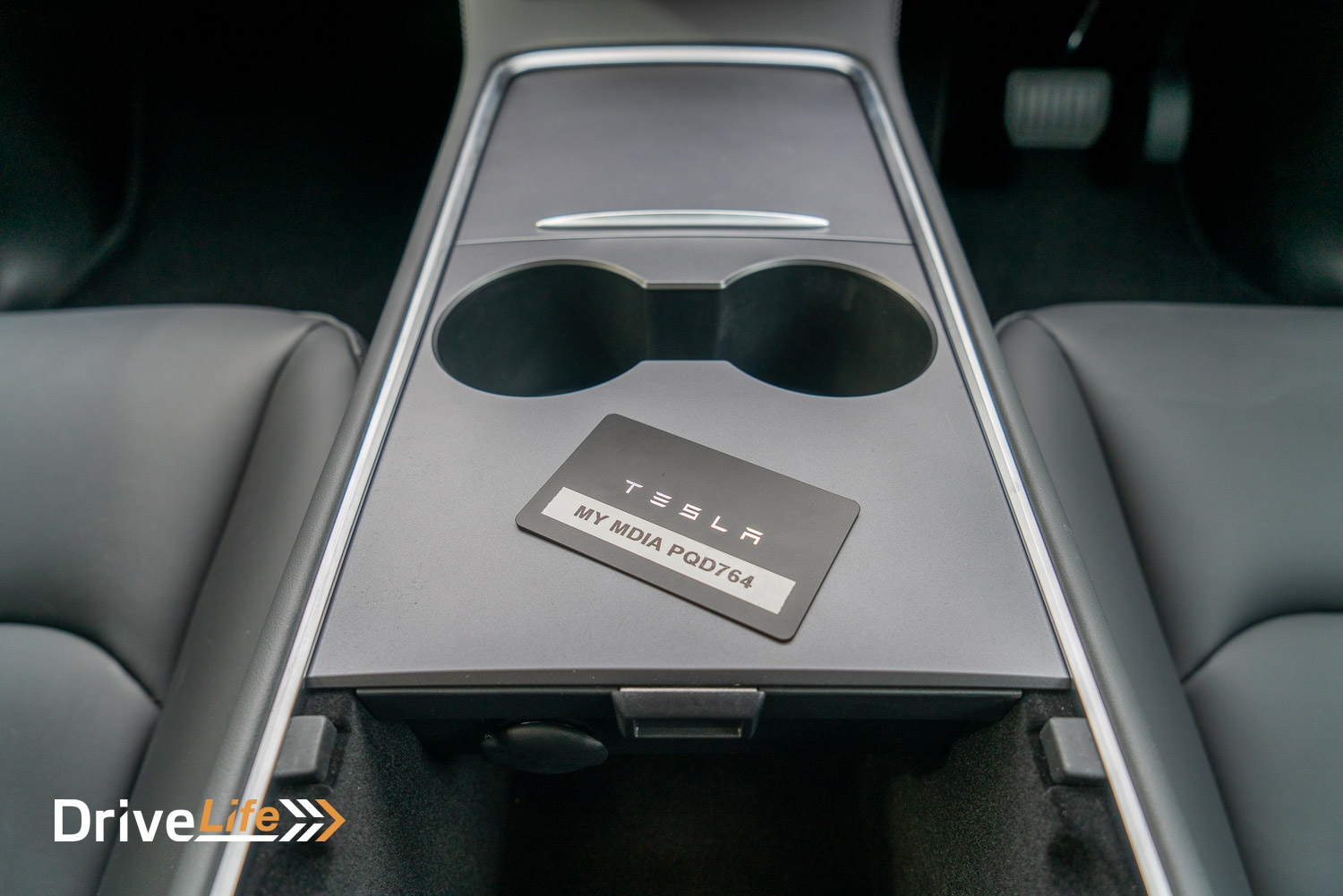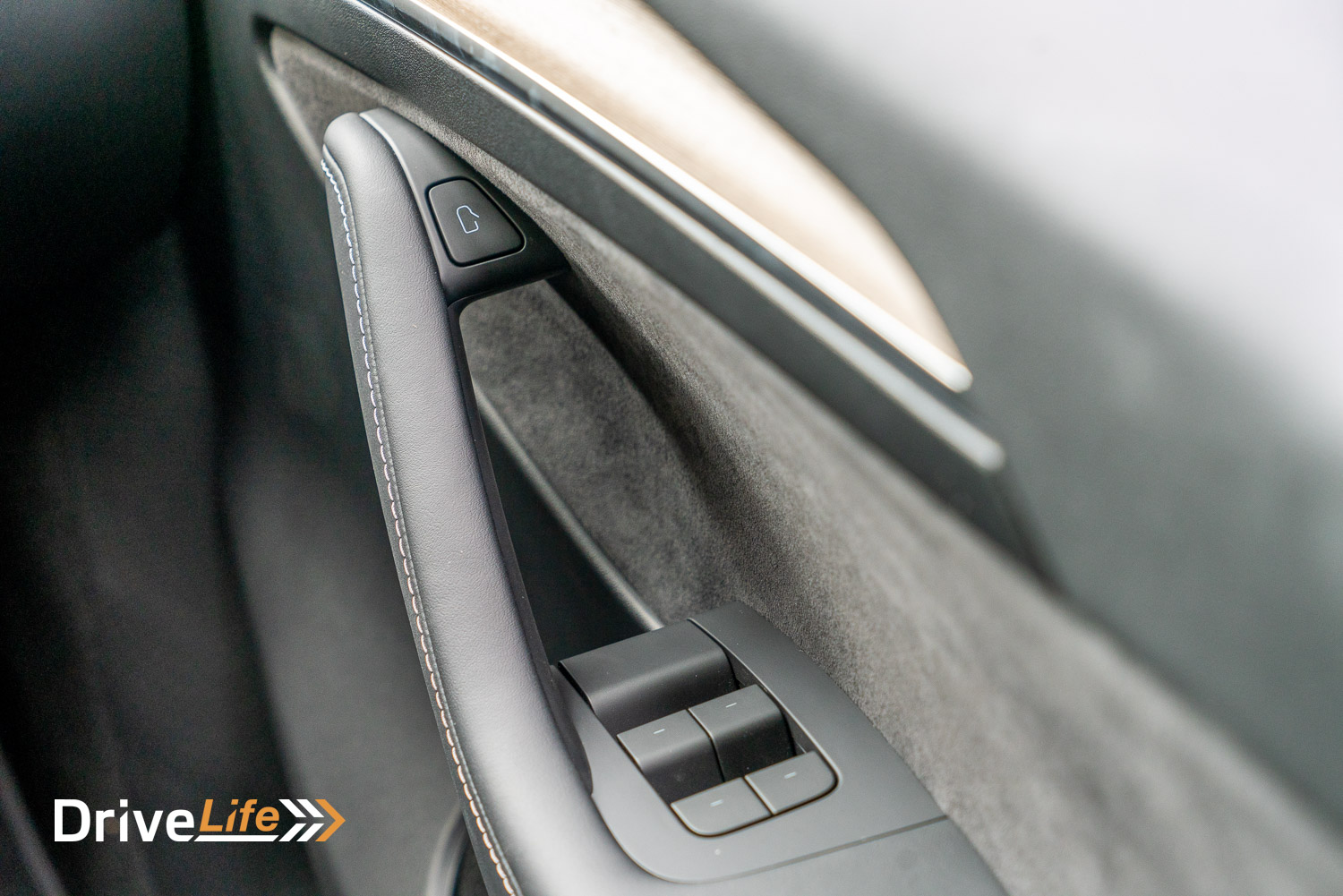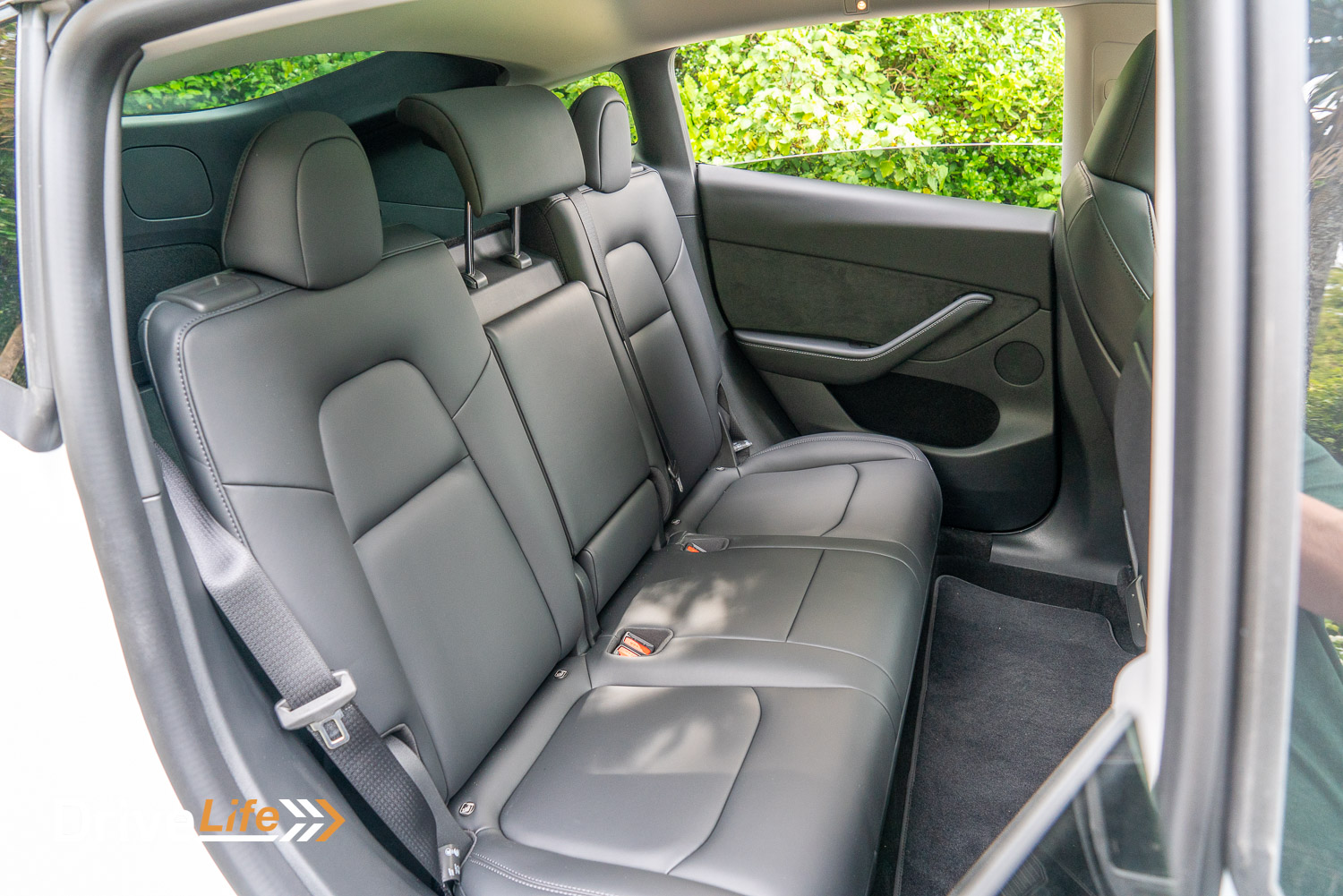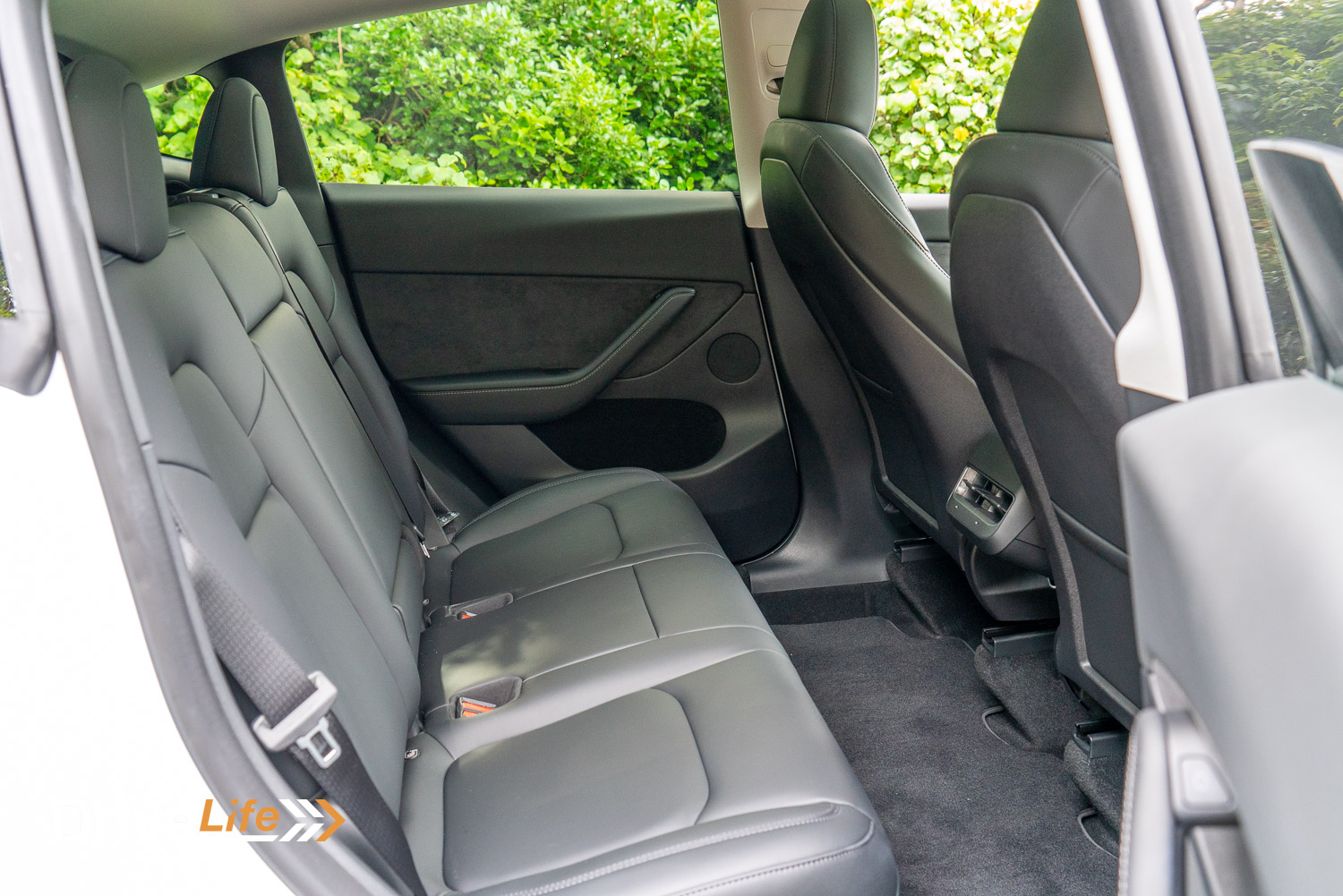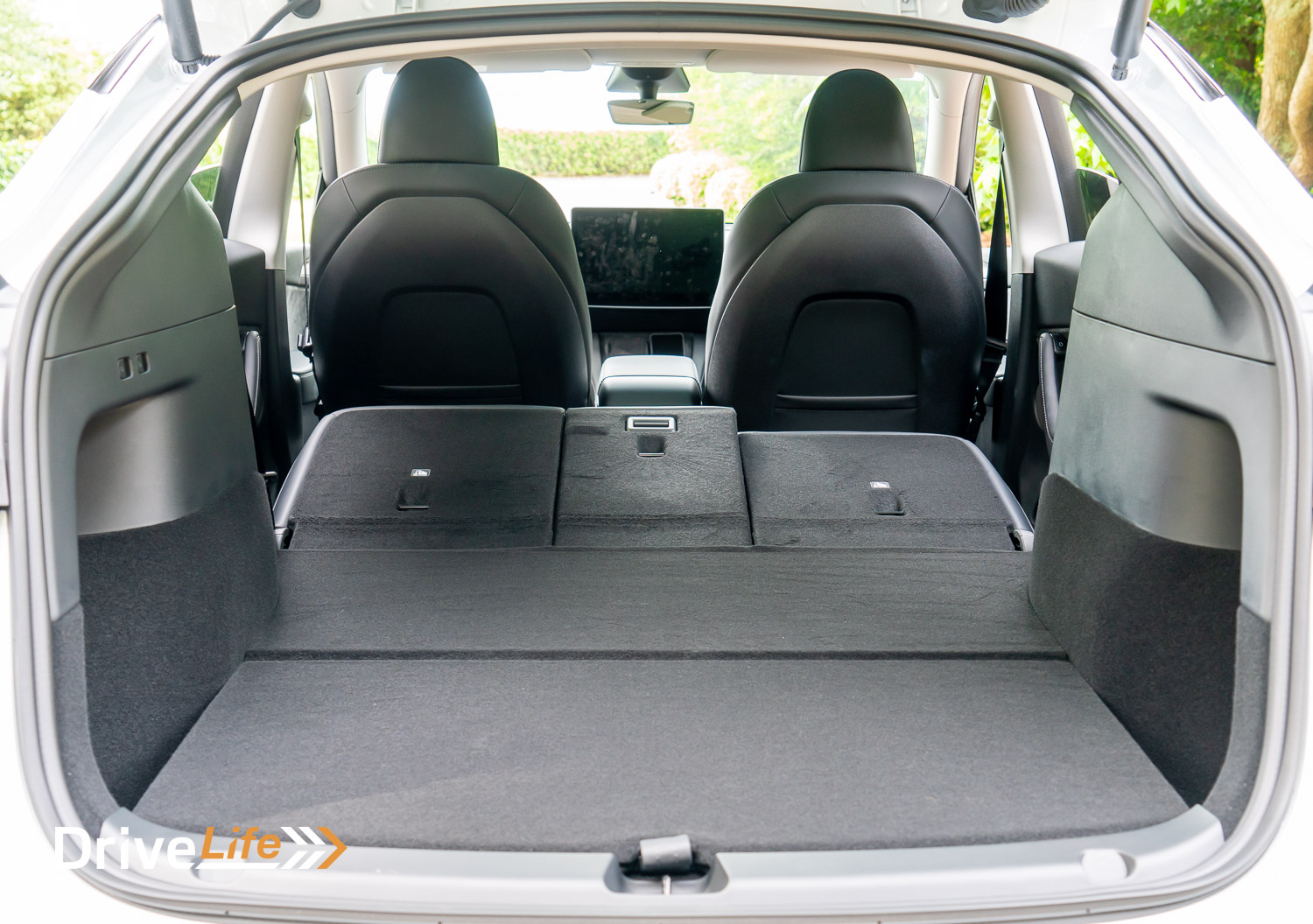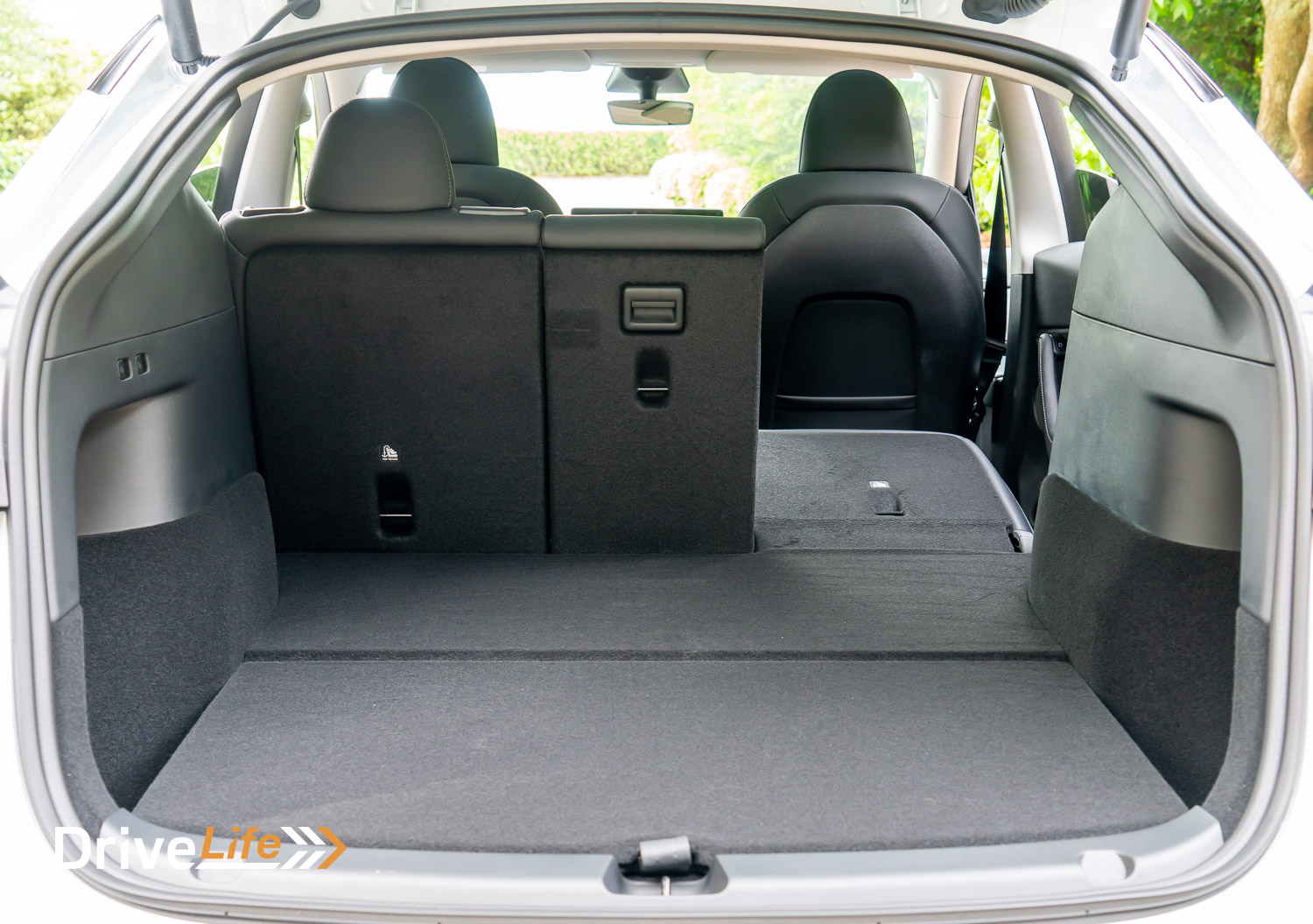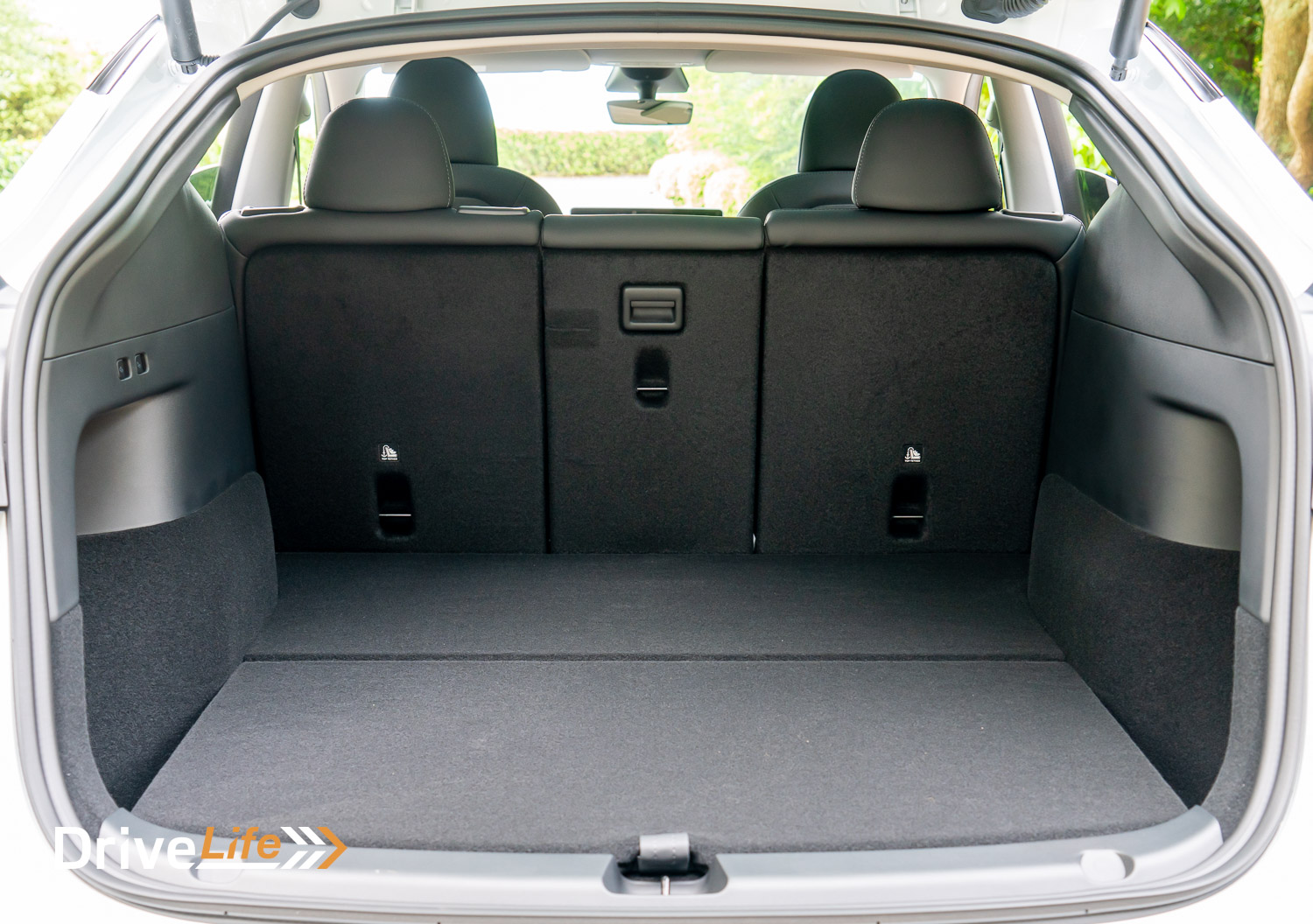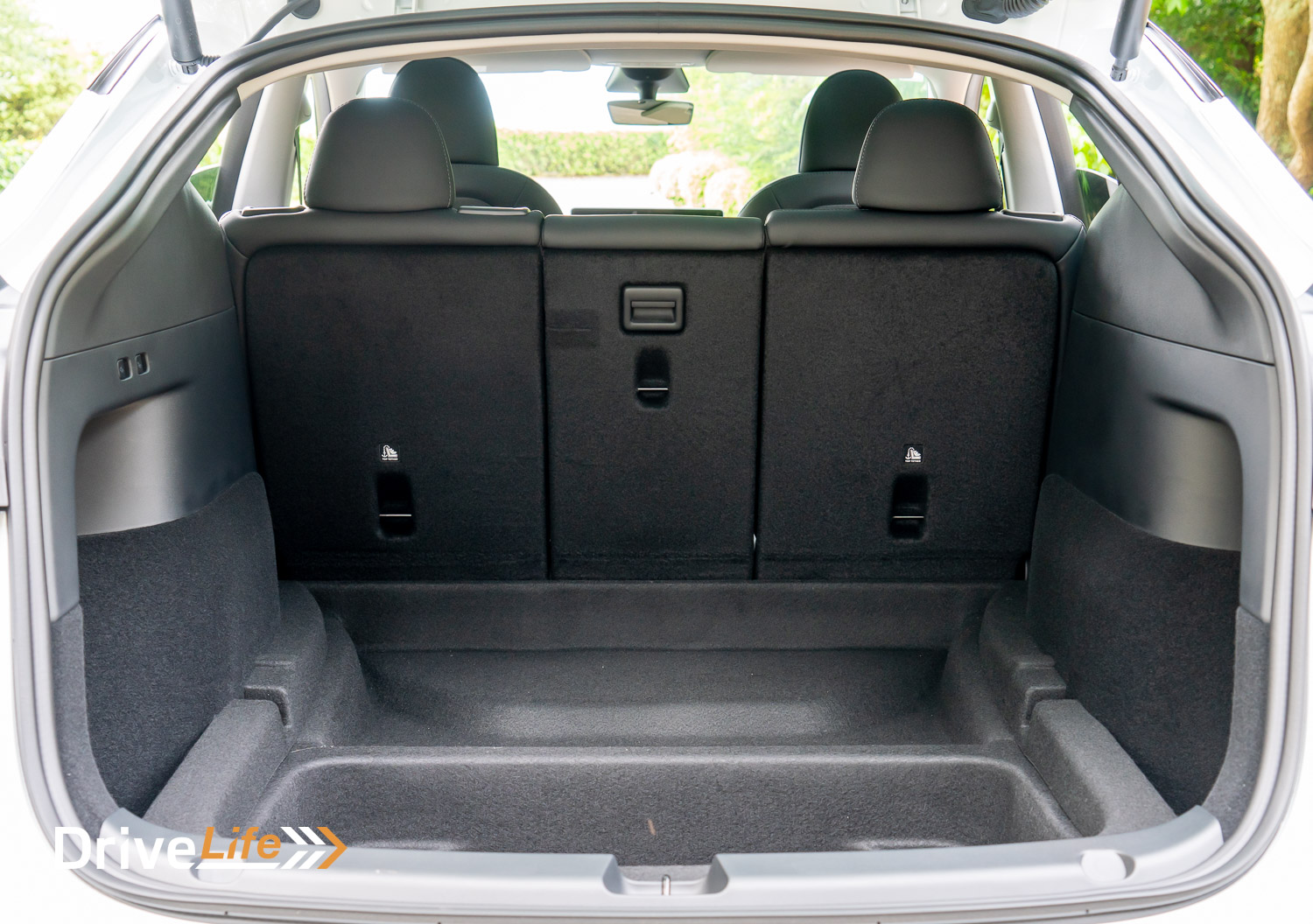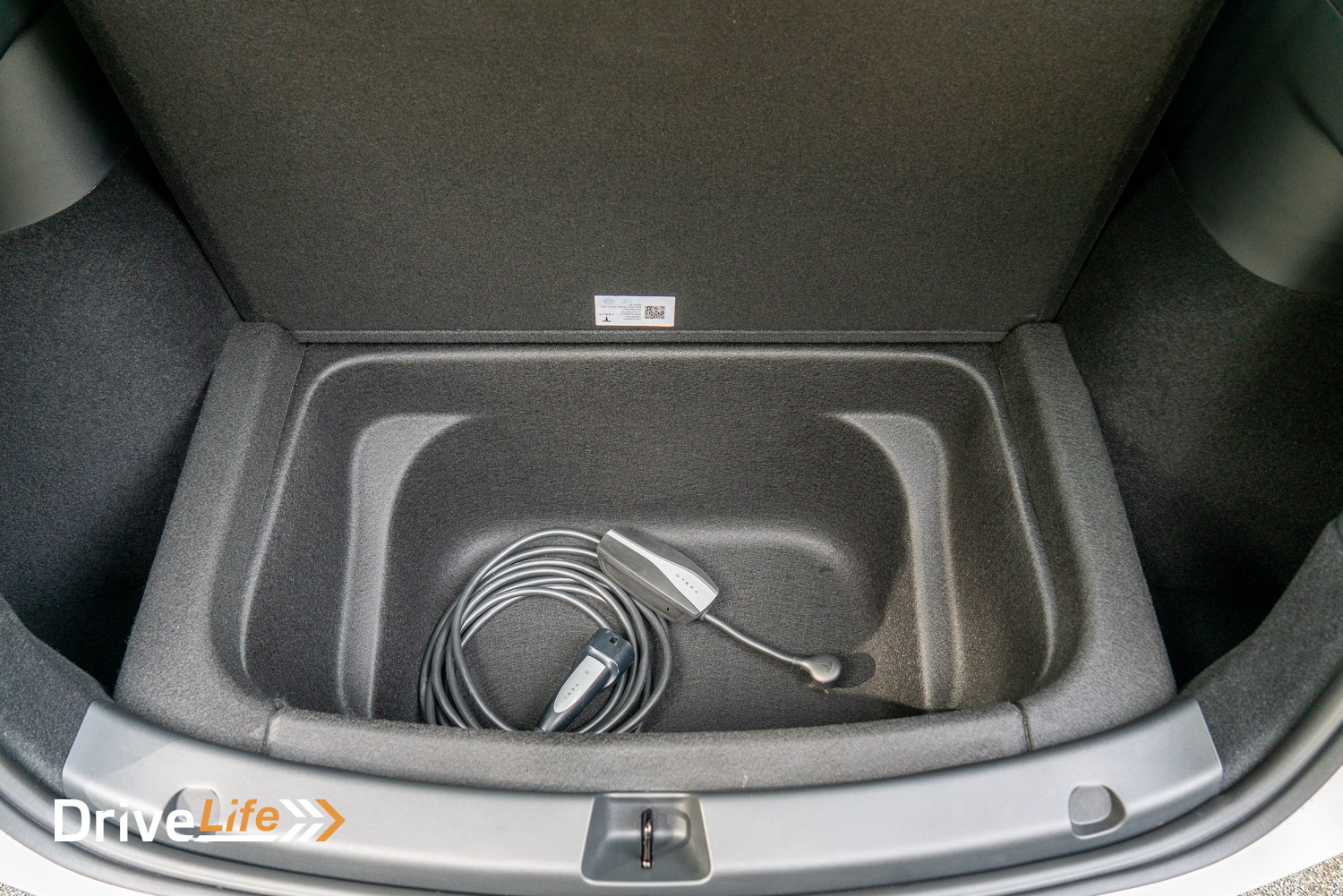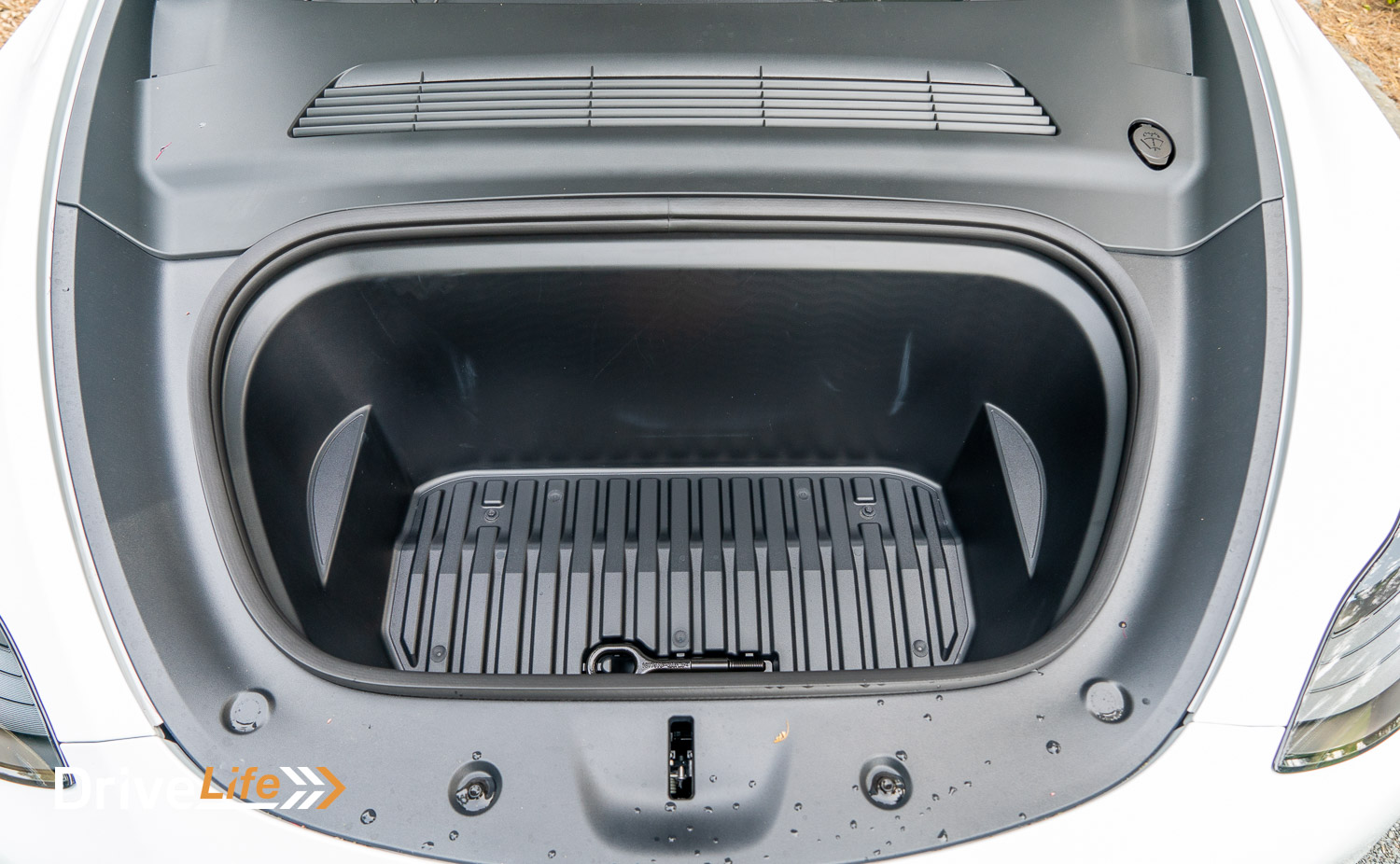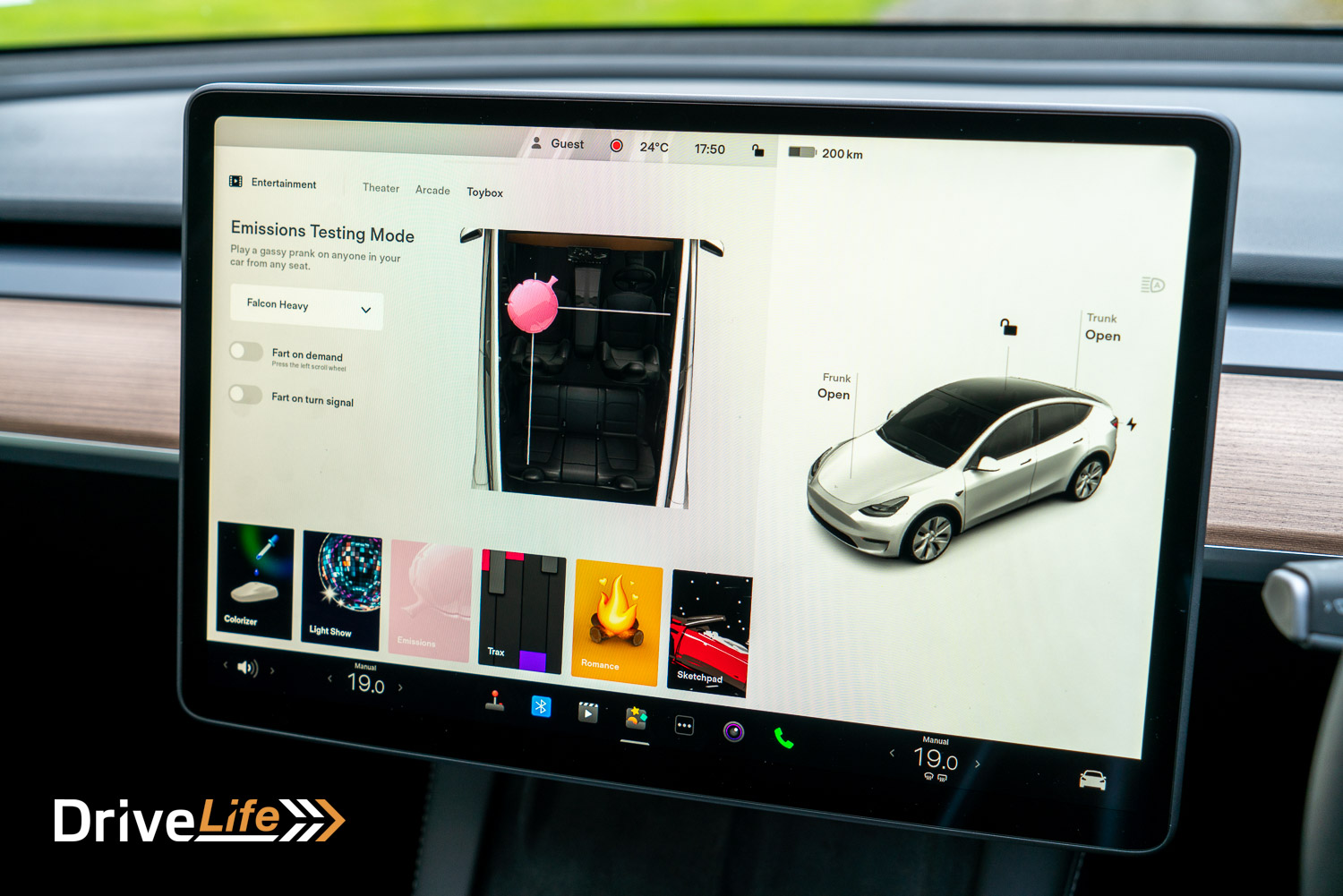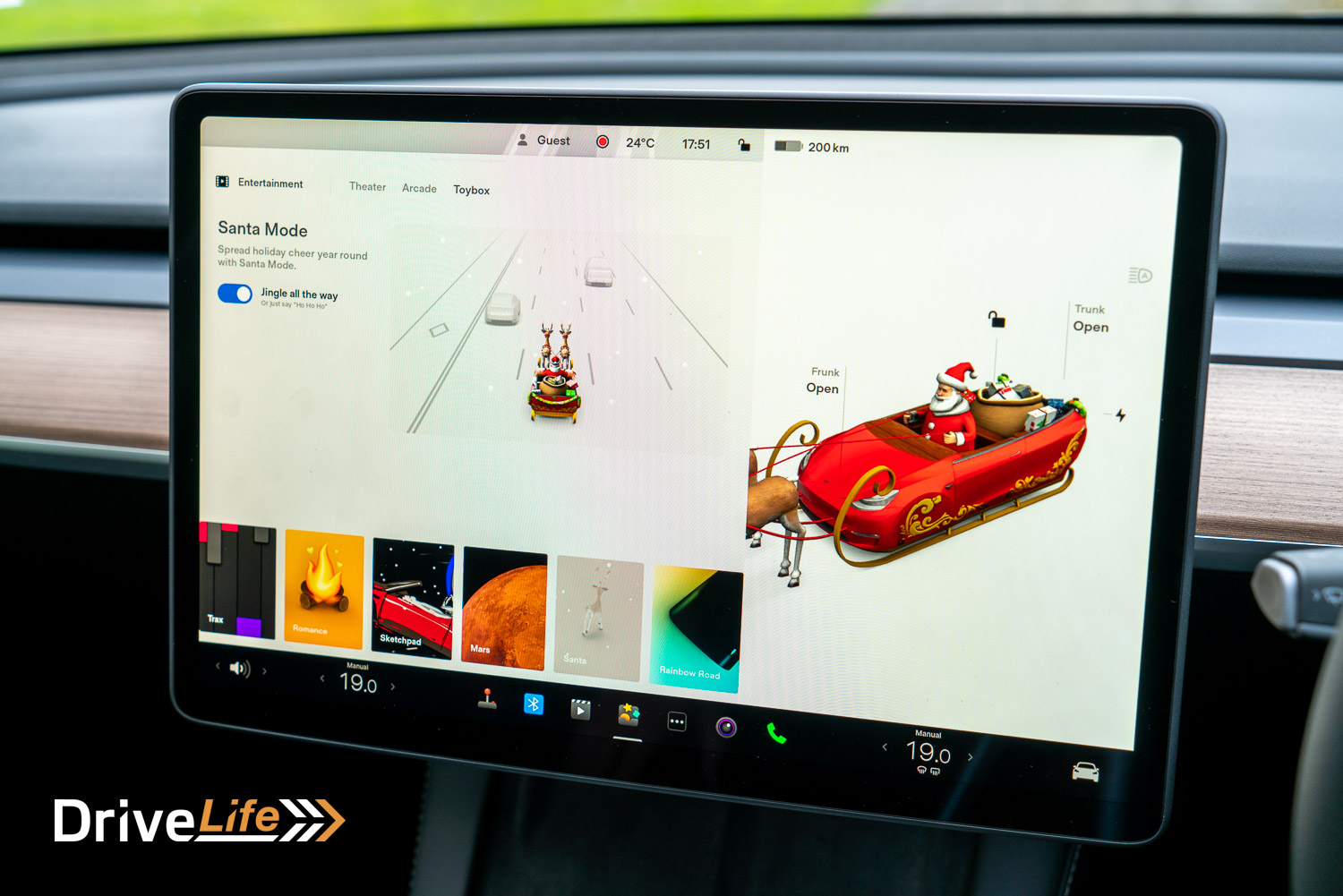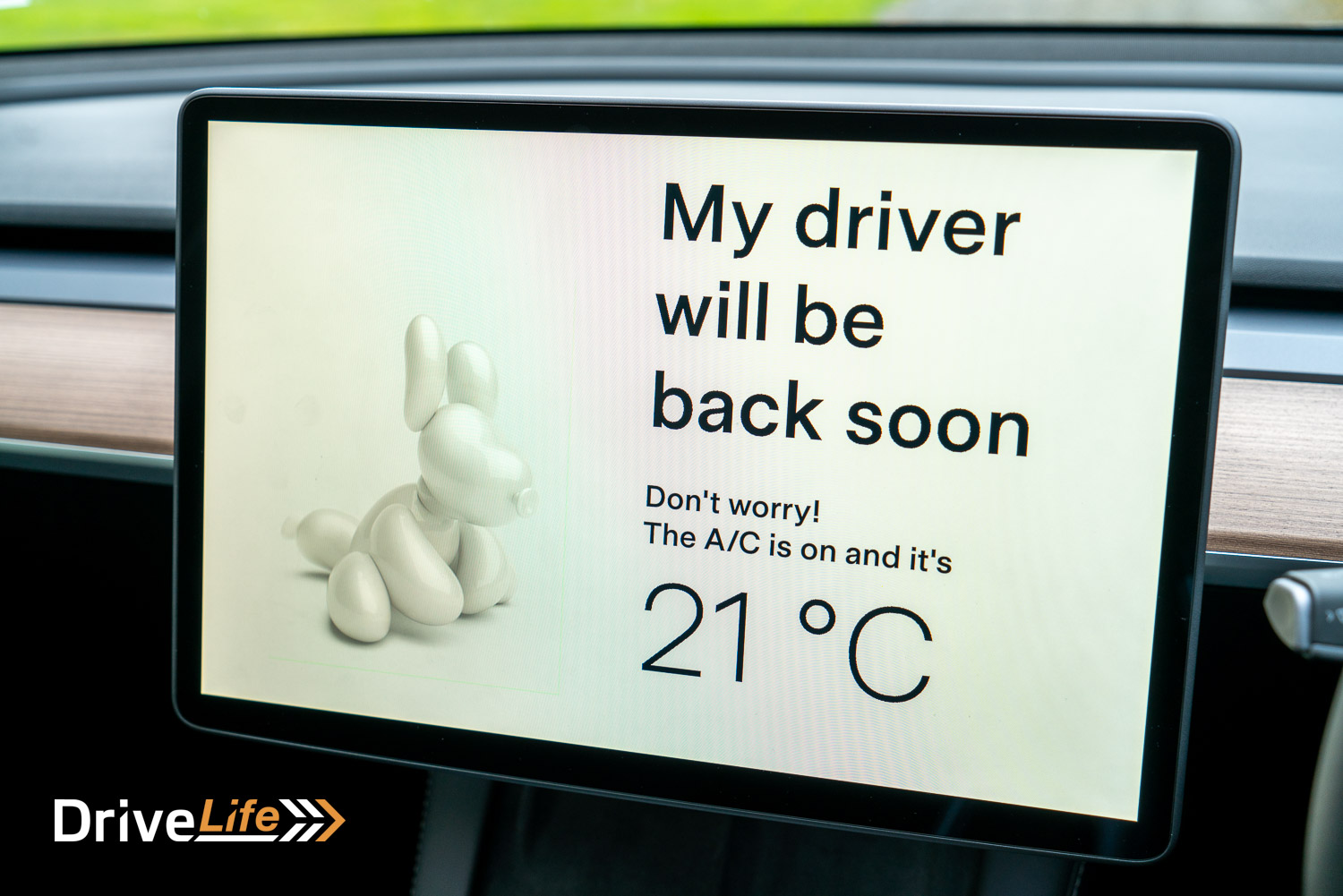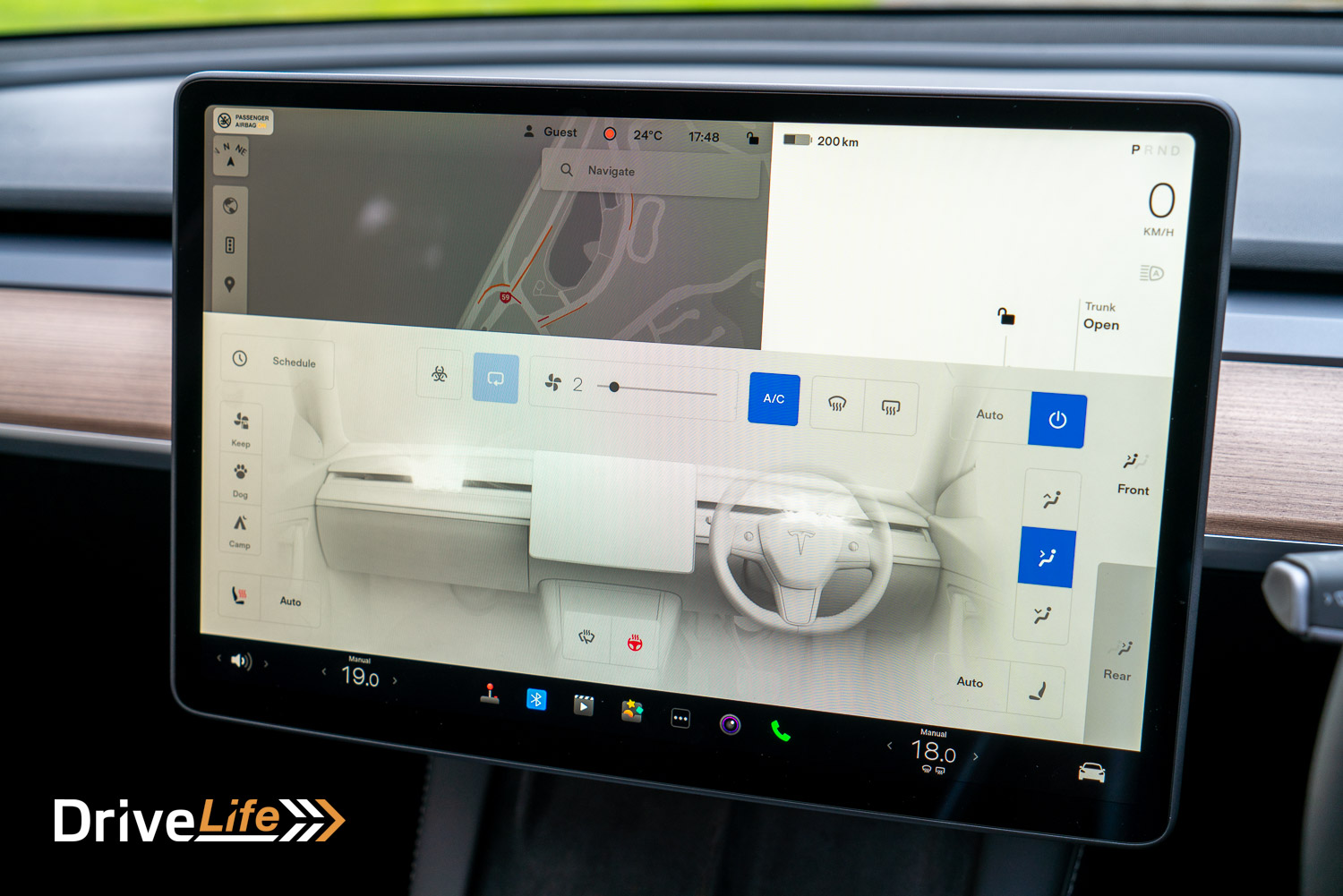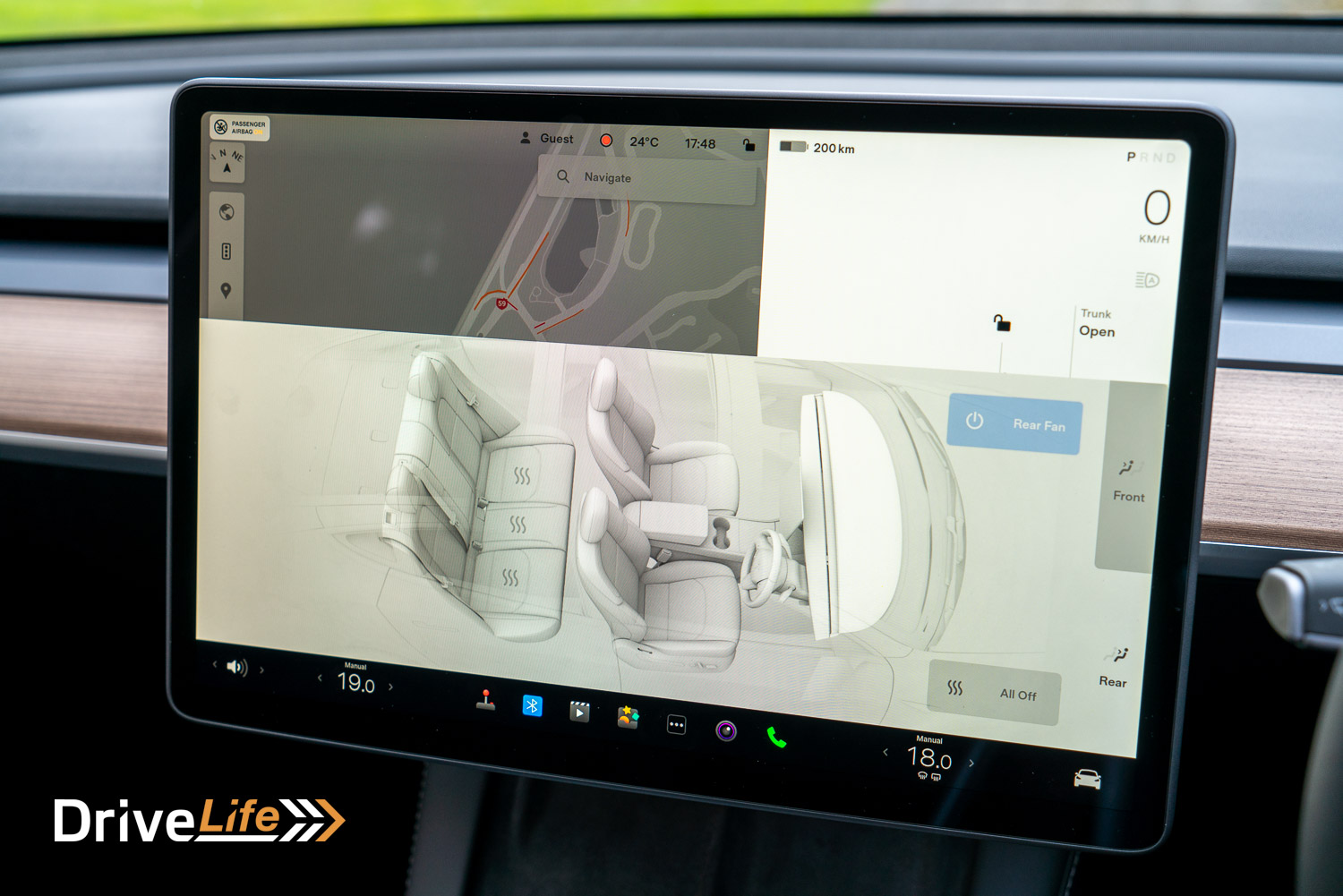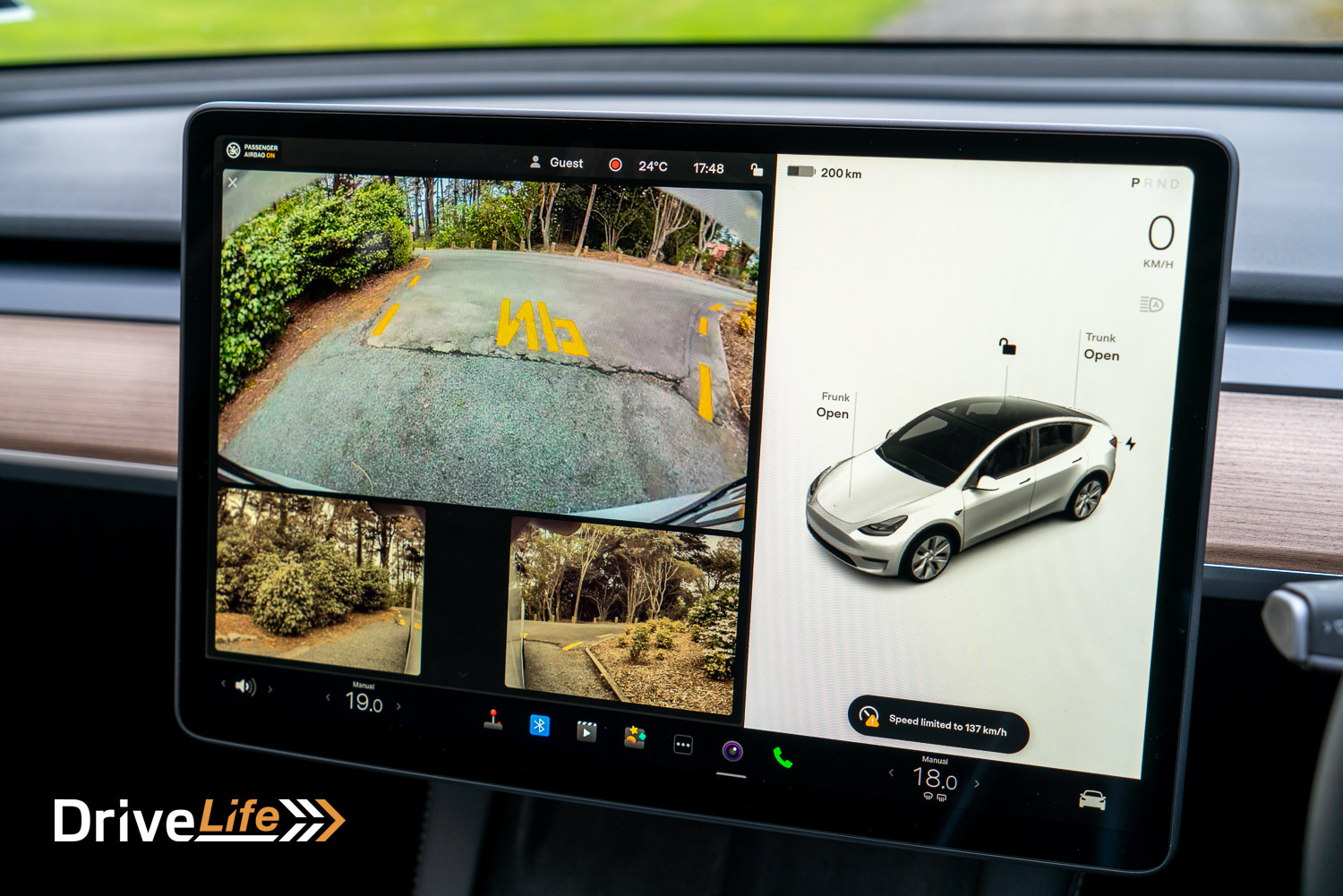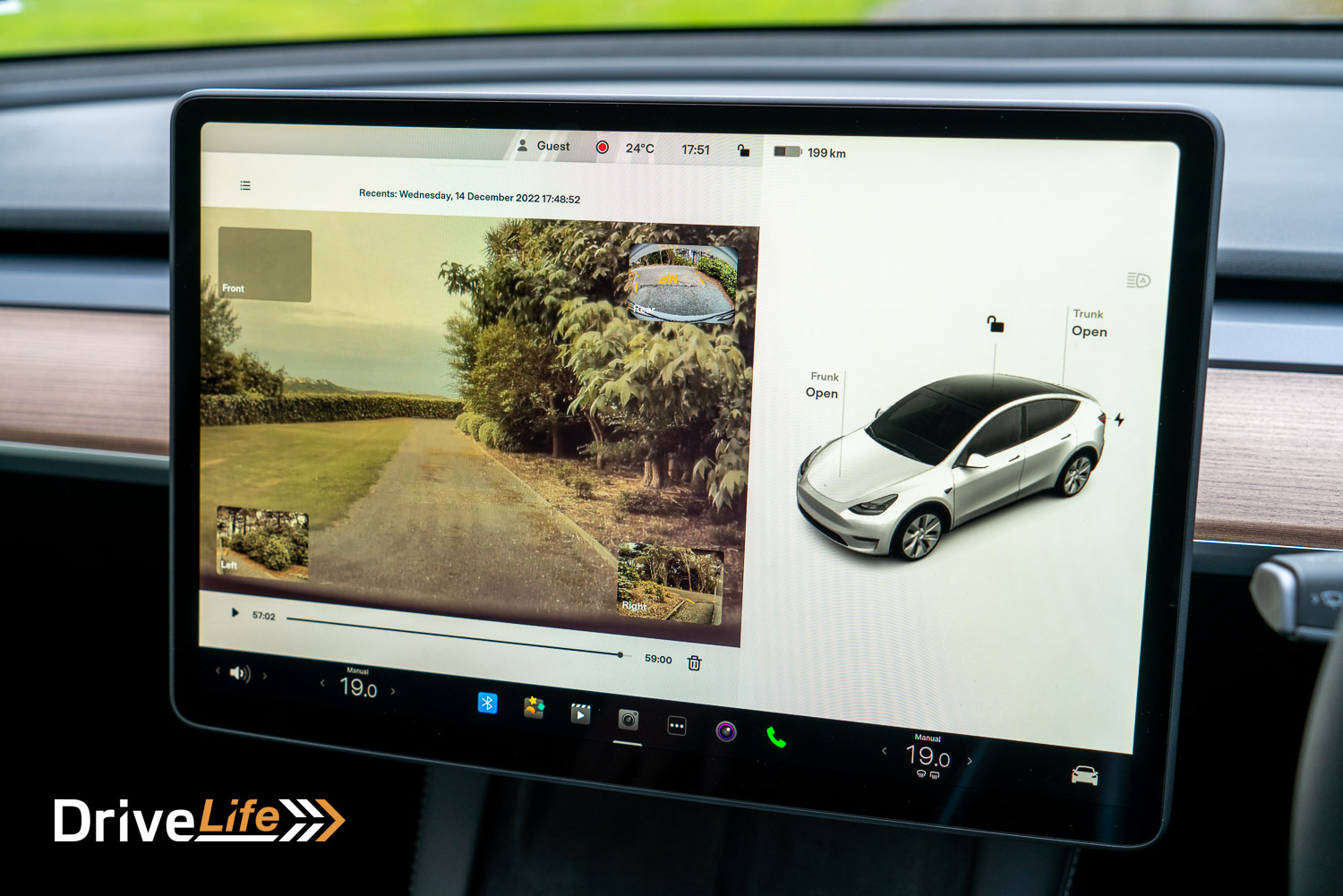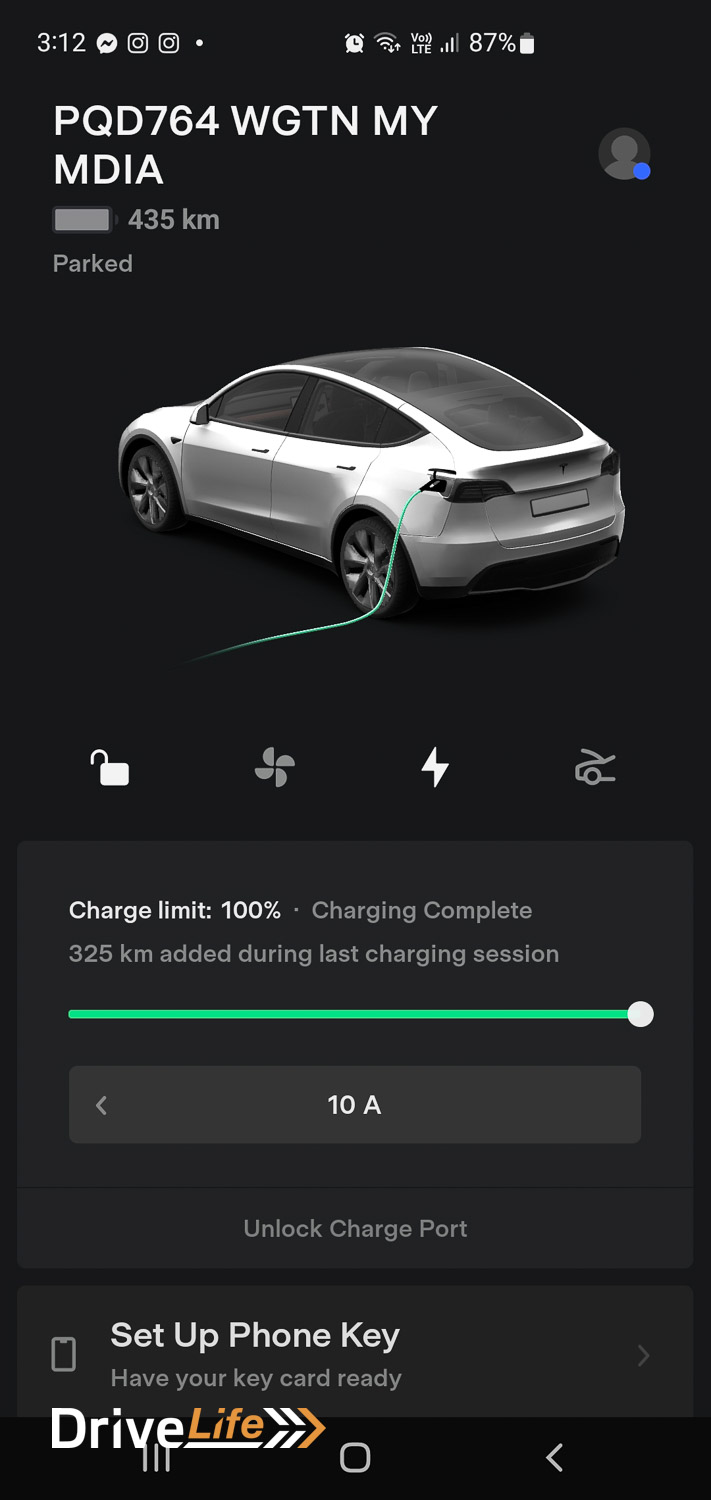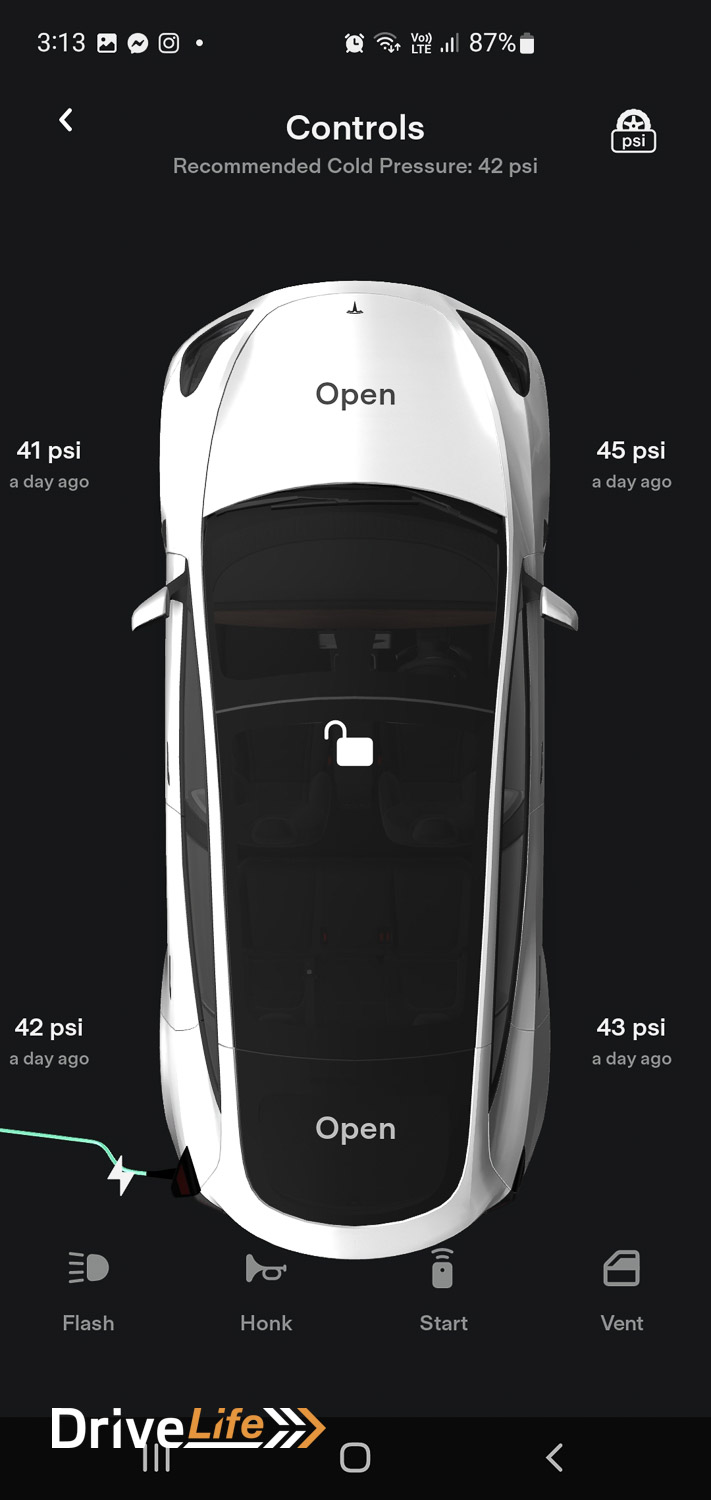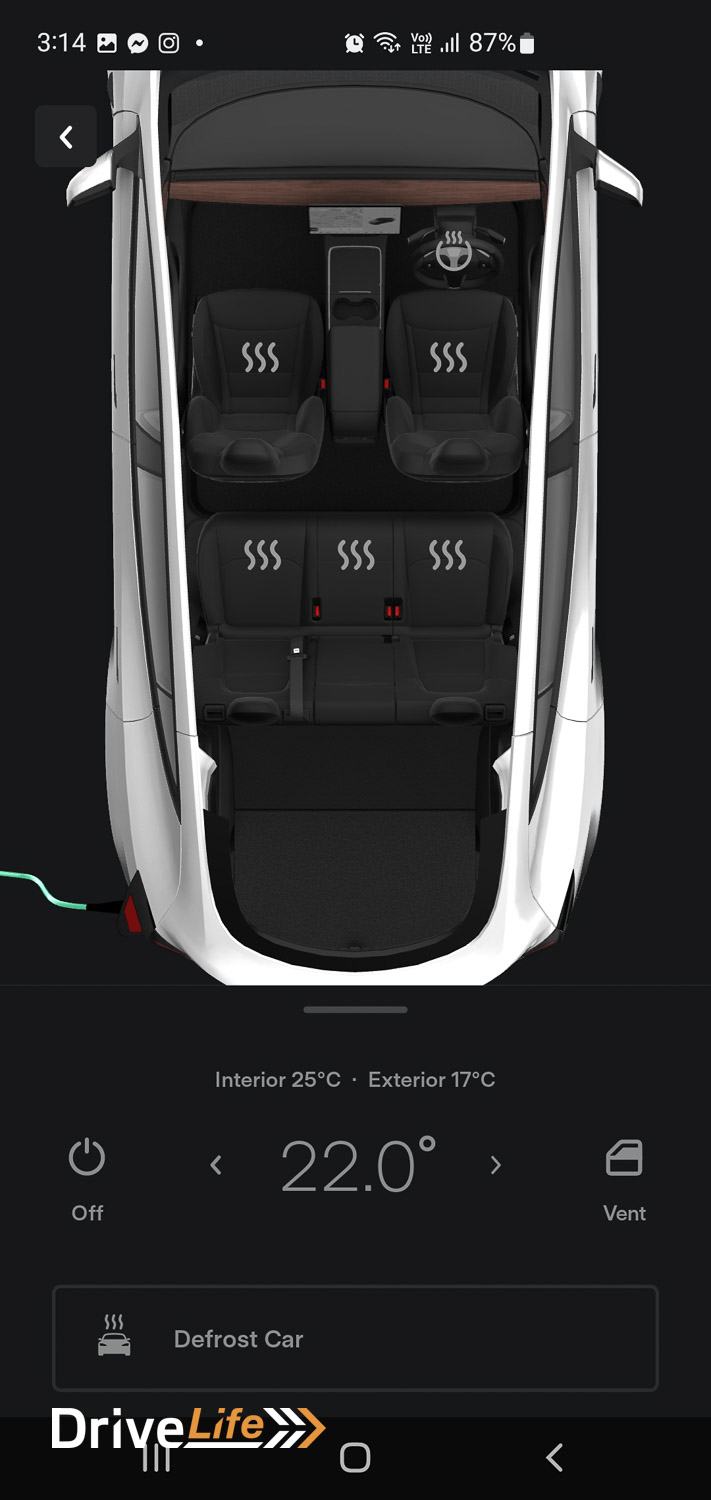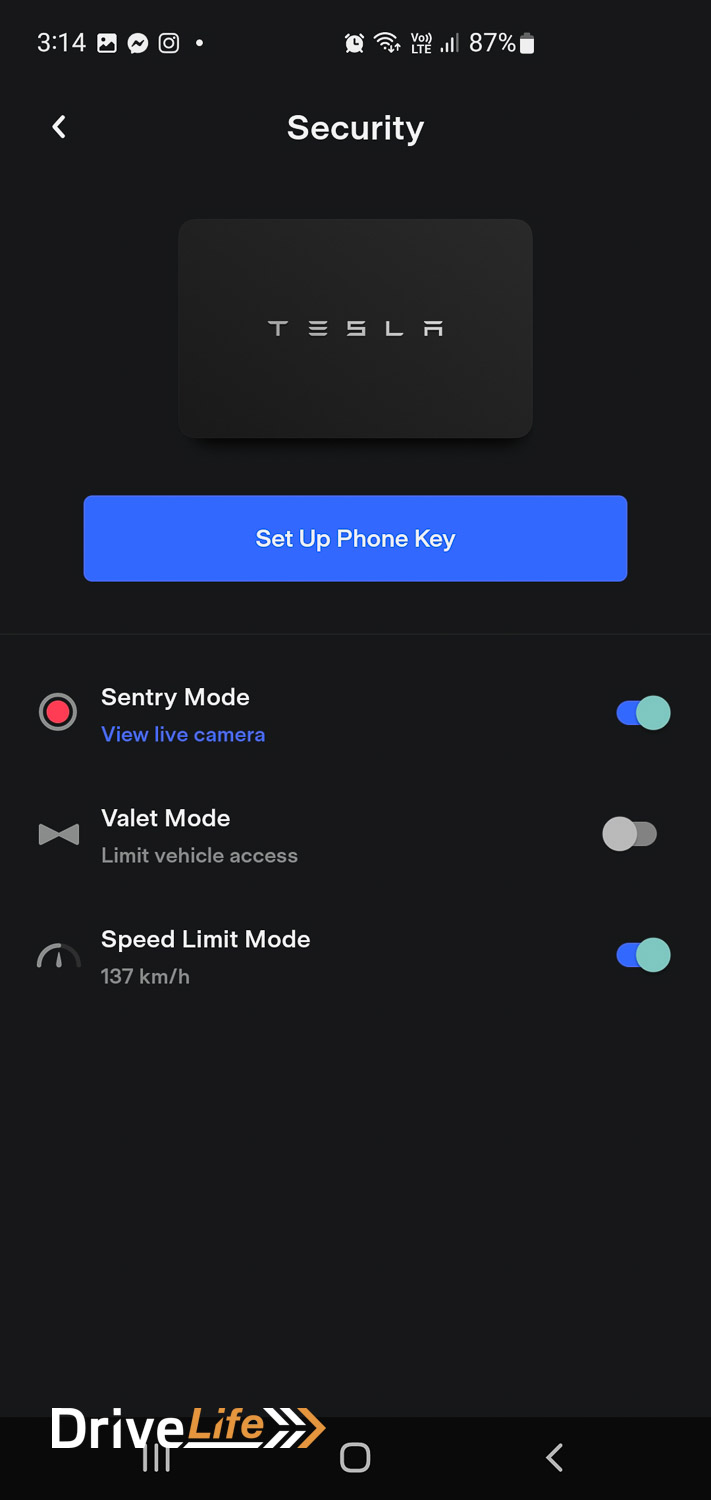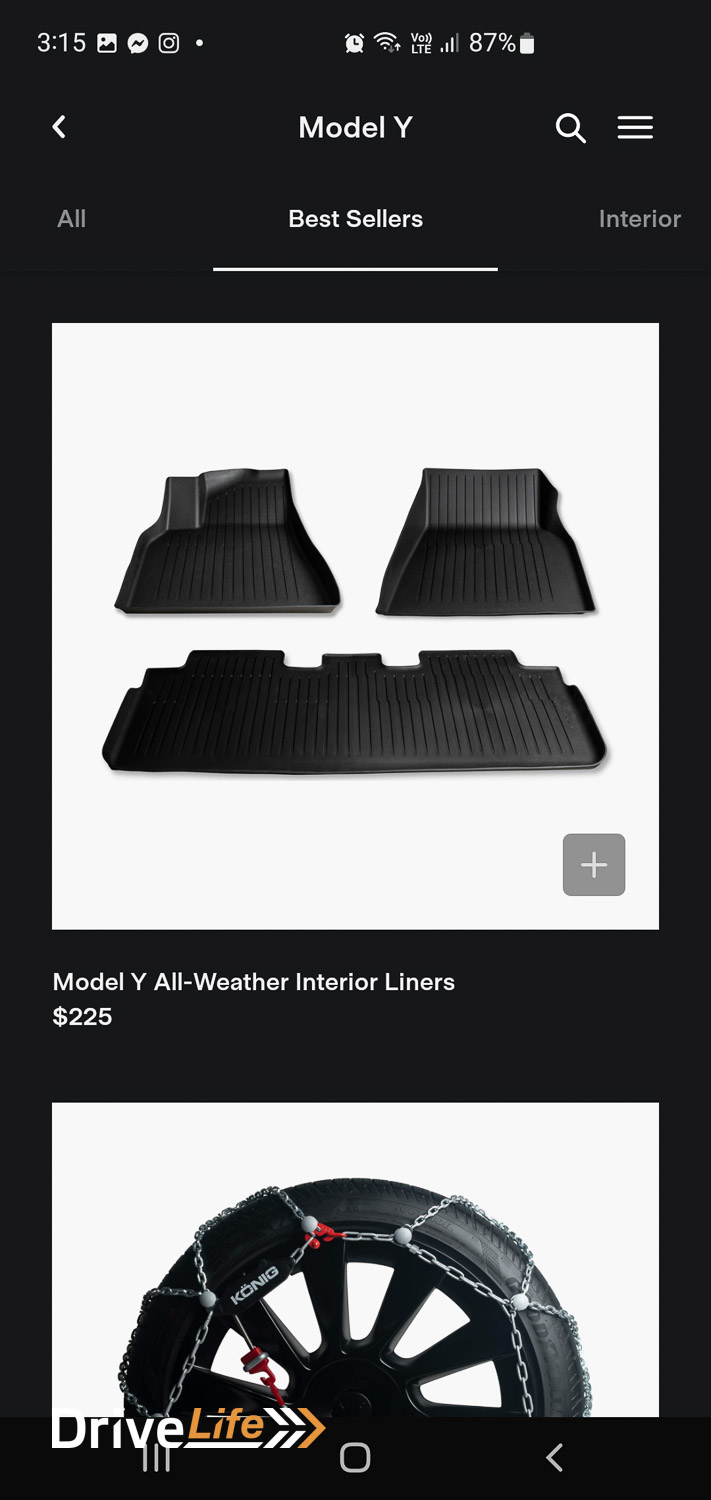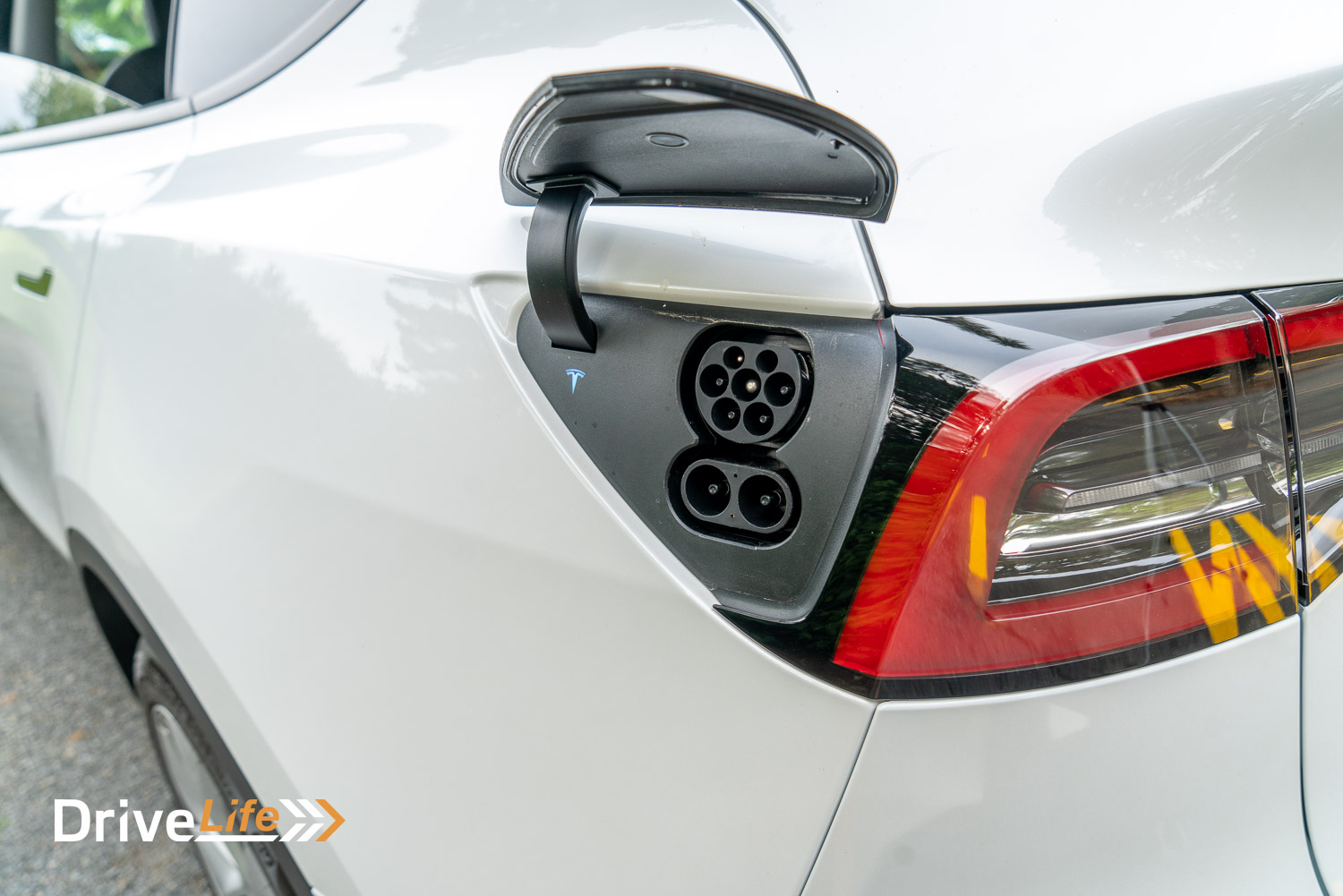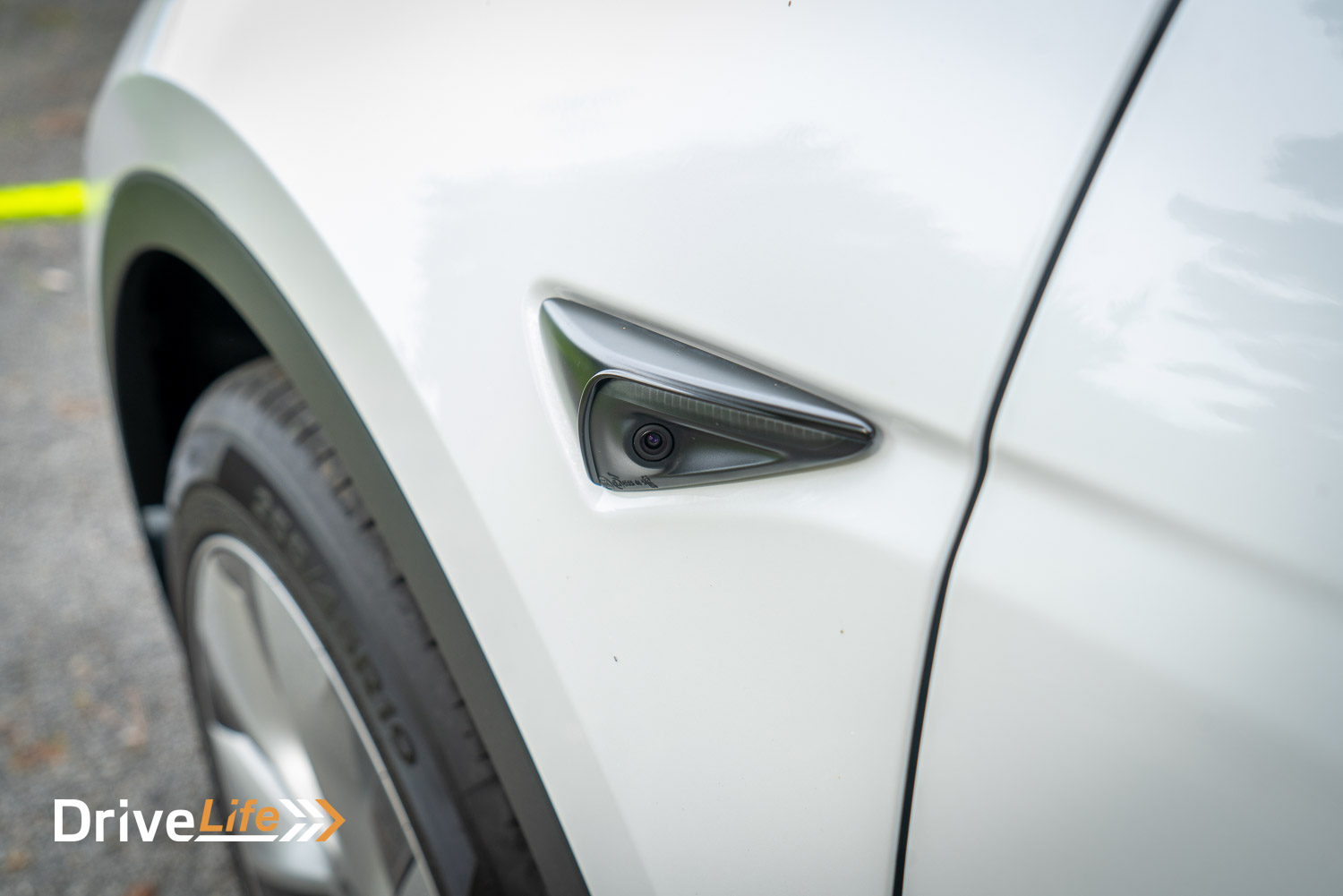Watching Tesla grow over the past decade has been a wild journey for consumers, investors and observers alike. I’m not just referring to the escapades of Elon Musk, either.
Since Tesla was founded by Martin Eberhard and Marc Tarpenning in 2005, the brand went from making the first Tesla Roadster, which was essentially a Lotus Elise with a battery inside, to producing the Tesla Model 3, which is now the world’s most popular EV.
While Tesla has been setting the car industry alight with technological innovation, they teased a new Roadster and Cybertruck, Tesla’s (grossly overvalued) share price eclipsed the entire market capitalisation of the entire automotive industry nearly four times over, and then in 2019, Tesla started accepting Dogecoin and Elon shot his Tesla Roadster into space. Imagine explaining that to your past self if you travelled back in time.
In some ways, the Tesla Model Y is a bit-off brand. Unlike the chief executive, the Model Y is probably Tesla’s most sensible product.
Y, you ask? (Pun intended). That’s because Tesla’s taken the Model 3, the most popular EV, and introduced it to the most popular vehicle segment in the market by turning it into a crossover.
It’s a sensible move, really. If the early sales numbers in New Zealand are anything to go by, the Model Y will sell like water in the desert, and globally the Model Y should bring some balance to Tesla’s precariously-balanced balance sheet.
The Model Y is also sensible enough to be nominated for New Zealand car of the year award. So, what is the Tesla Model Y like to live with? We had the keys (or more accurately, a card) for two weeks to find out.
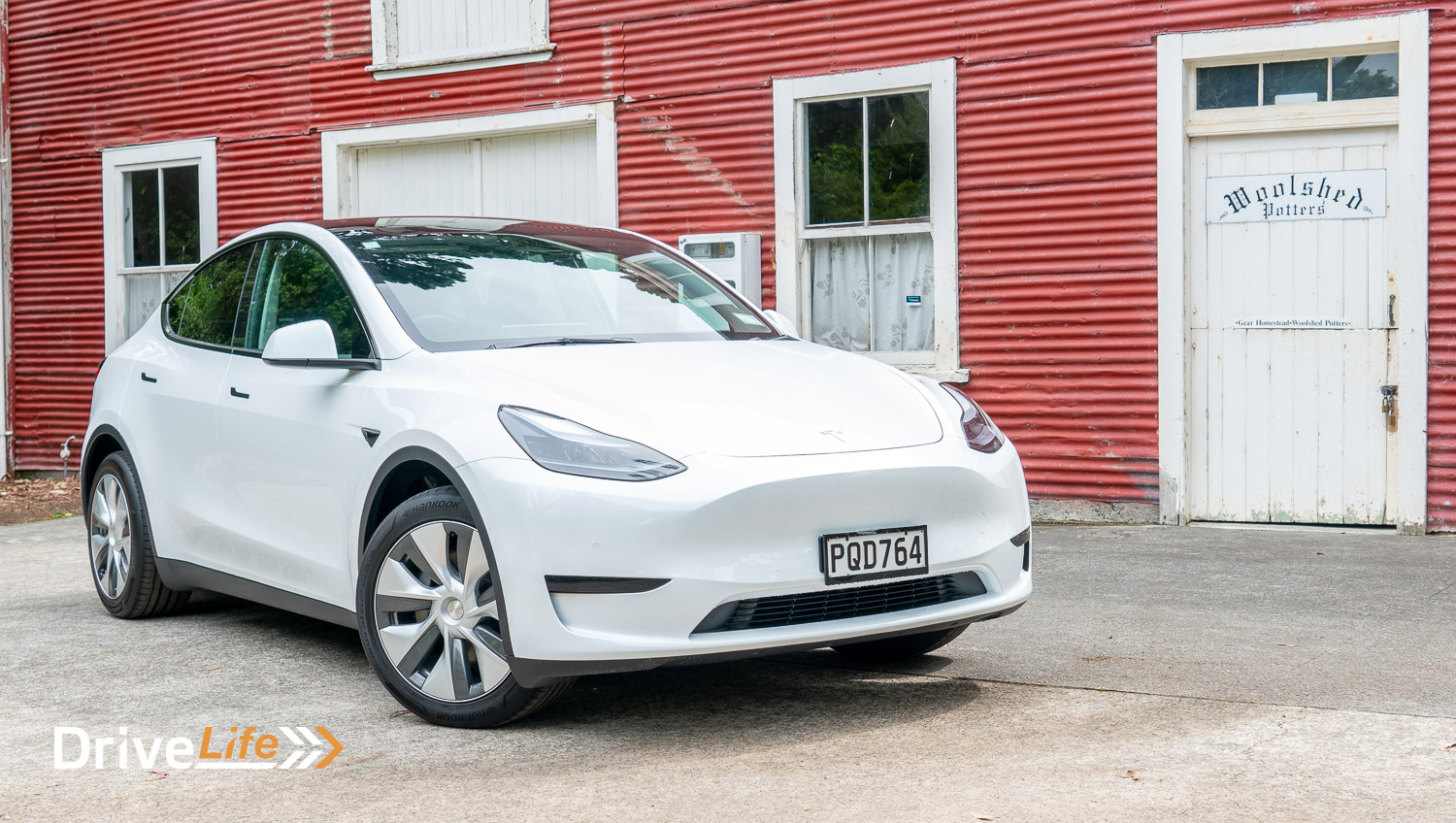
What We Like and Dislike About The 2022 Tesla Model Y
| What we like | What we don’t like |
| Range One of the best infotainments on the market Litany of tech tricks Super easy to live with Visibility Glass roof Huge boot space Tesla app and tech ecosystem | Cabin acoustics Clumsy handling at high speed Ride quality needs work Looks like an overweight Model 3 Tesla supercharger network limited in New Zealand ‘Full Self Drive’ software is not worth your time |
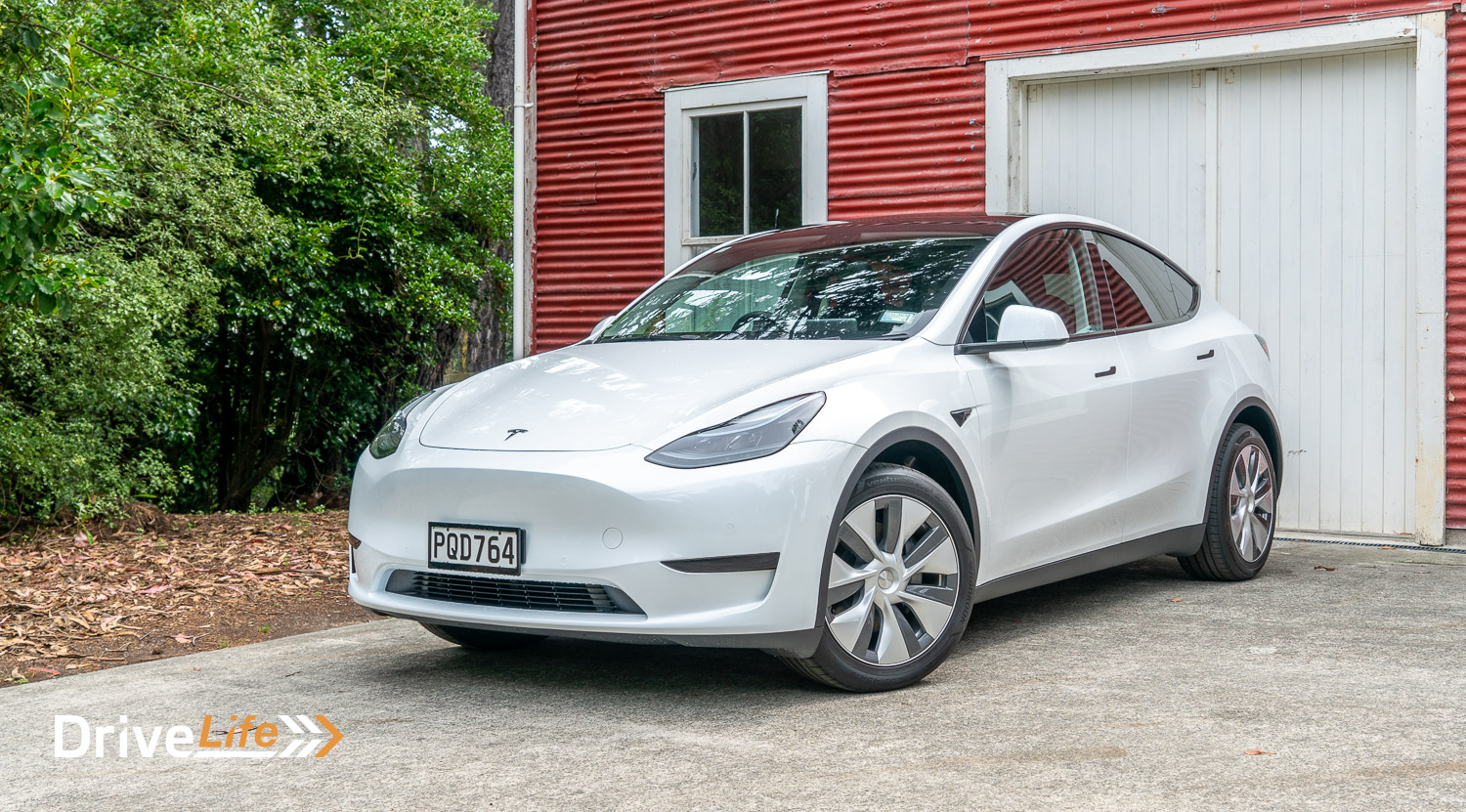
What’s In The 2022 Tesla Model Y Range?
There are three variants of the Model Y available globally, but only two are available for New Zealand buyers.
| Model | Range | Price |
| Tesla Model Y (Rear Wheel Drive) | 455kms | $75,900 |
| Tesla Model Y Performance | 514kms | $105,990 |
The entry level Model Y, also known as the Model Y Rear-Wheel Drive, has a single electric motor driving the rear wheels. It outputs 220kW of power and 420Nm of torque, and can achieve the 100km/h sprint in 6.9 seconds.
The Model Y Performance has two electric motors, with one motor dedicated to each axle, providing all-wheel drive. Combined output of both motors is 335kW of power and 639Nm of torque, achieving the 100km/h sprint in a claimed 3.7 seconds – with rollout subtracted.
In case you were curious, the model we miss out on is the Tesla Model Y Long Range.
The entry Model Y qualifies for the Clean Car Scheme subsidy of $8,625.
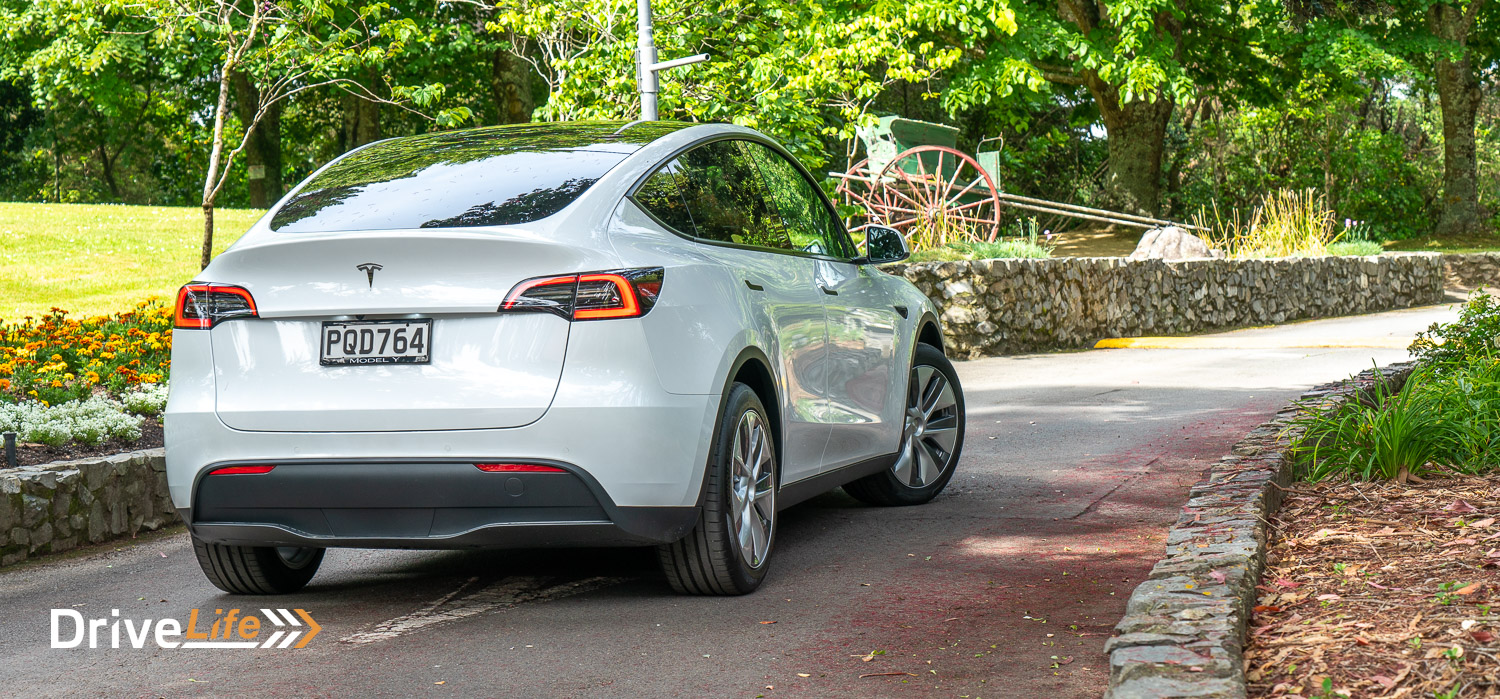
2022 Tesla Model Y Equipment Highlights
- 15” Centre display
- 19” Gemini wheels
- 4 x USB-C ports
- Blind-spot monitoring
- Cabin Overheat Protection
- Dual Qi wireless phone charging
- Emergency lane departure avoidance and correction
- Front collision warning
- Glass roof with ultraviolet and infrared protection
- Heated front and rear seats
- Heated steering wheel
- In-app vehicle location monitoring
- LED daytime running lights
- Obstacle aware acceleration
- Power folding and heated, auto-dimming exterior mirrors
- Power front seats with memory for the driver through driver profiles
- Sat-Nav
- Sentry Mode
- Side collision warning
- Vegan leather interior
All Tesla’s come equipped with “Auto-pilot”, which is Tesla’s way of saying:
- Adaptive Cruise Control
- Lane-Centring assist
For an extra $5,700, you gain Enhanced Auto-pilot, which gives you:
- Navigate on Autopilot
- Auto Lane Change
- Autopark
- Summon
- Smart Summon
For $11,400, Tesla will give you their ‘Full Self Drive Package’, including:
- Enhanced Auto-pilot
- Traffic Light and Stop Sign Control
- And a promise for more (more on this later)
There are five different colours available for your Model Y, all but white carry an extra cost:
- Pearl White Pearl
- Solid Black ($1,700)
- Midnight Silver Metallic ($1,700)
- Deep Blue Metallic ($1,700)
- Red Multi-Coat ($2,800)
You can also option 20’’ alloys for a further $2,800. Opting for a black and white interior will cost you a further $1,700.
For more information on the Tesla Model Y, visit the Tesla New Zealand website.
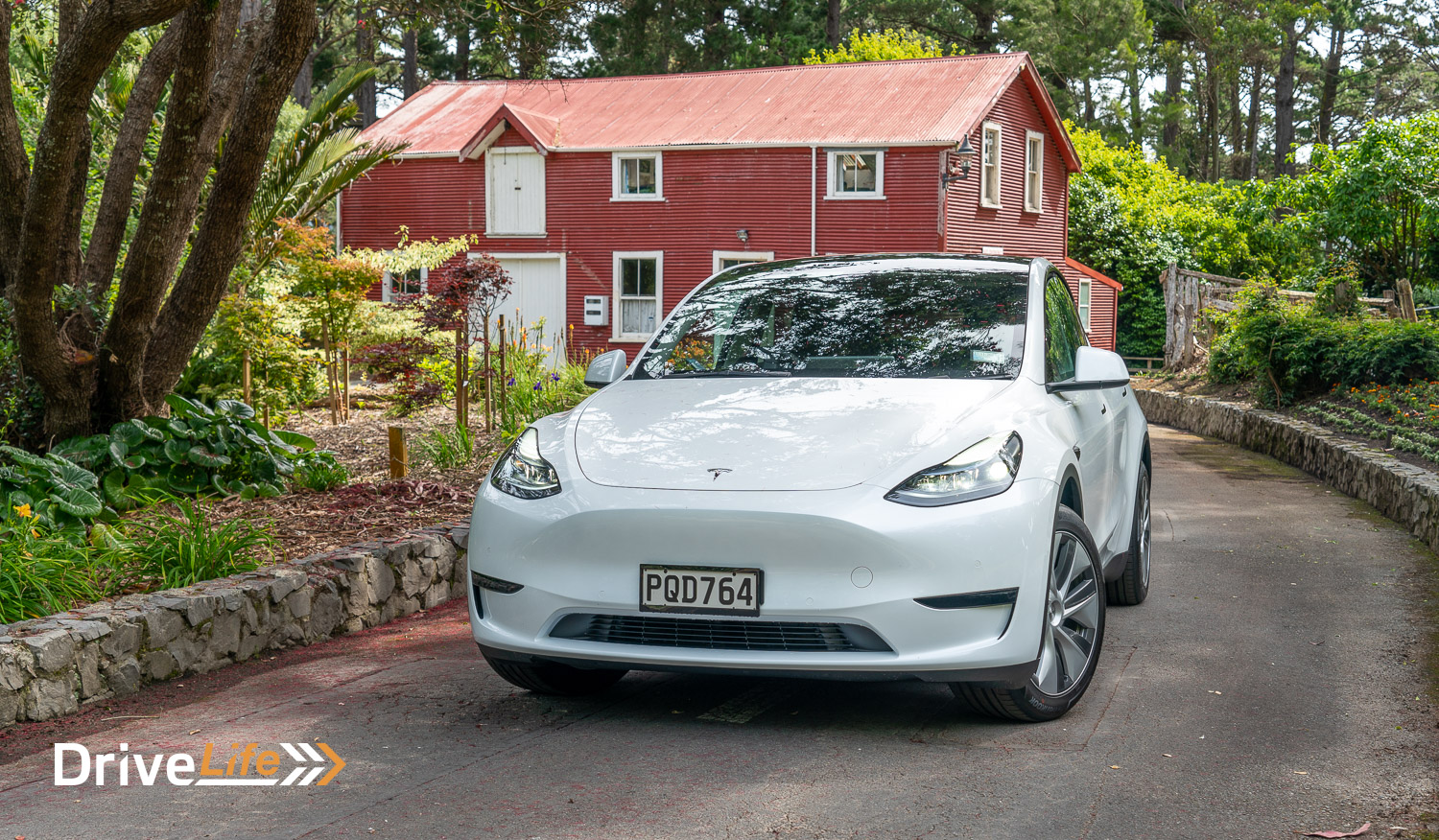
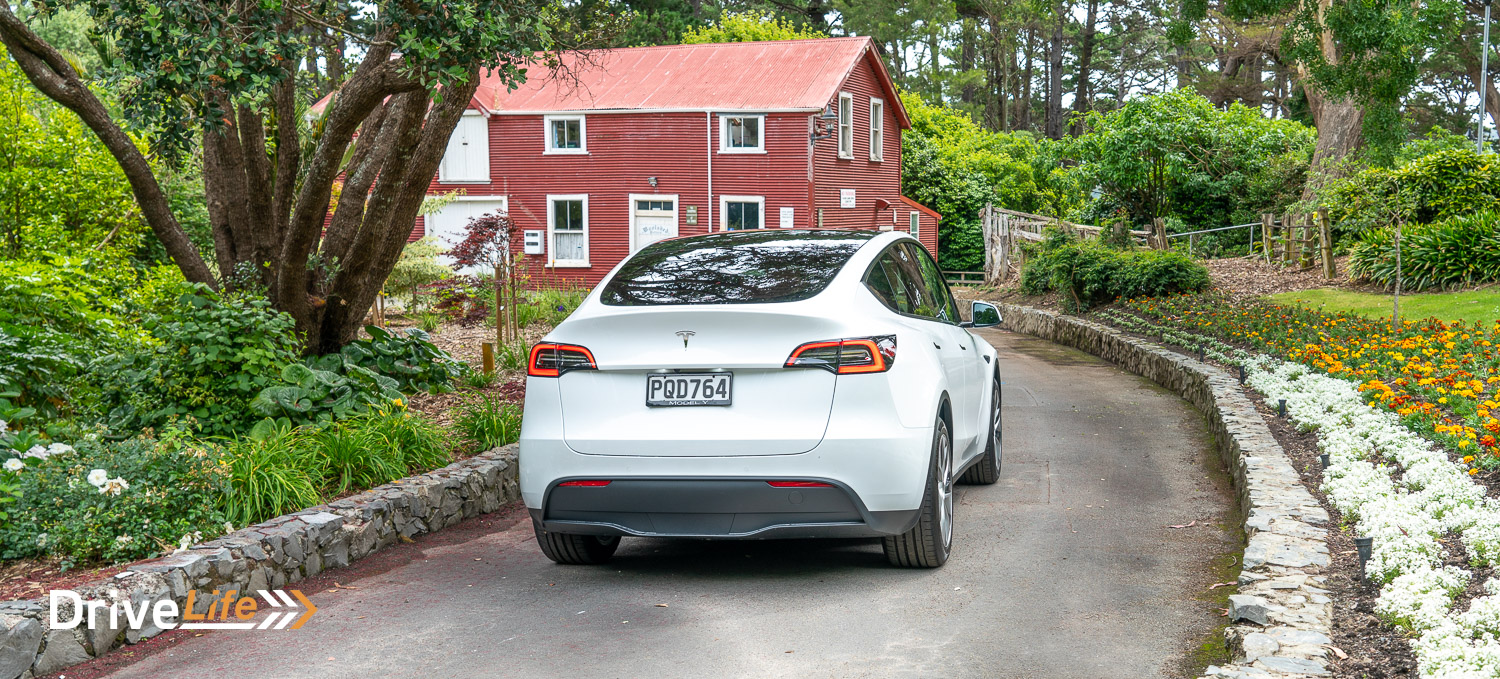
How Does The Tesla Model Y Compare To Its Competition?
All prices below exclude the refund or additional cost of the New Zealand Clean Car Programme.
| Make/ Model | Battery Capacity kW-hr | Power/Torque kW/Nm | 0-100km/h seconds | Range (WLTP) | Boot Space, litres | Price (excl CCP) |
| Mercedes-Benz EQA FWD SUV | 66.5 | 140/375 | 8.9 | 400 | 340 | $91,800 |
| Hyundai Ioniq 5 (RWD) | 58 | 125/350 | 8.5 | 384 | 527 | $79,990 |
| Lexus UX300e | 54 | 150/300 | 7.5 | 360 | 310 | $79,990 |
| Kia EV6 Air Long Range | 77.4 | 168/350 | 5.2 | 528 | 490 | $78,990 |
| Tesla Model Y (RWD) | 60 | 220/420 | 6.9 | 455 | 854 | $77,987 |
| Hyundai Kona Series II | 39 | 100/395 | 9.9 | 305 | 332 | $69,990 |
| BYD Atto 3 Extended | 60 | 150/310 | 7.3 | 420 | 440 | $59,990 |
| MG ZS EV | 50.3 | 130/280 | 8.2 | 320 | 359 | $53,990 |
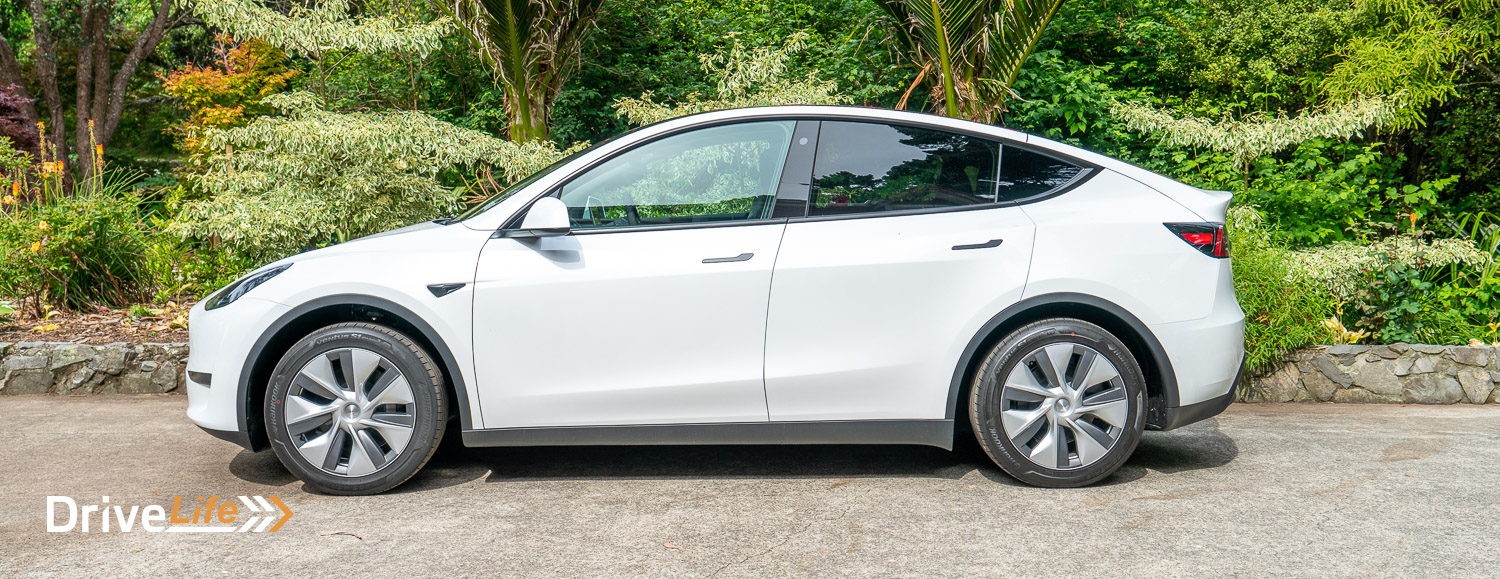
First Impressions Of The 2022 Tesla Model Y
Tesla has often been credited with making the electric car ‘sexy’. If you’re talking about the Model S, which had a juggernaut design team and included Henrik Fisker as a consultant (designer of the BMW Z8 and Aston DB9), then you might have a point.
Although I can’t say that Tesla has kept up that reputation for the Model Y. The design is essentially just a bloated Model 3. After all, 75% of it is the same as a Model 3. Also, in this standard white colour, our Model Y reminds me of Beluga whale.
Ignoring the harsher criticism, there’s nothing overtly wrong with the Model Y’s design. I just think it’s not all that imaginative.
If you are considering ordering one, spending that extra thousand on a colour will dull down the appliance factor. I’ve found that the blue disguises the mass well.
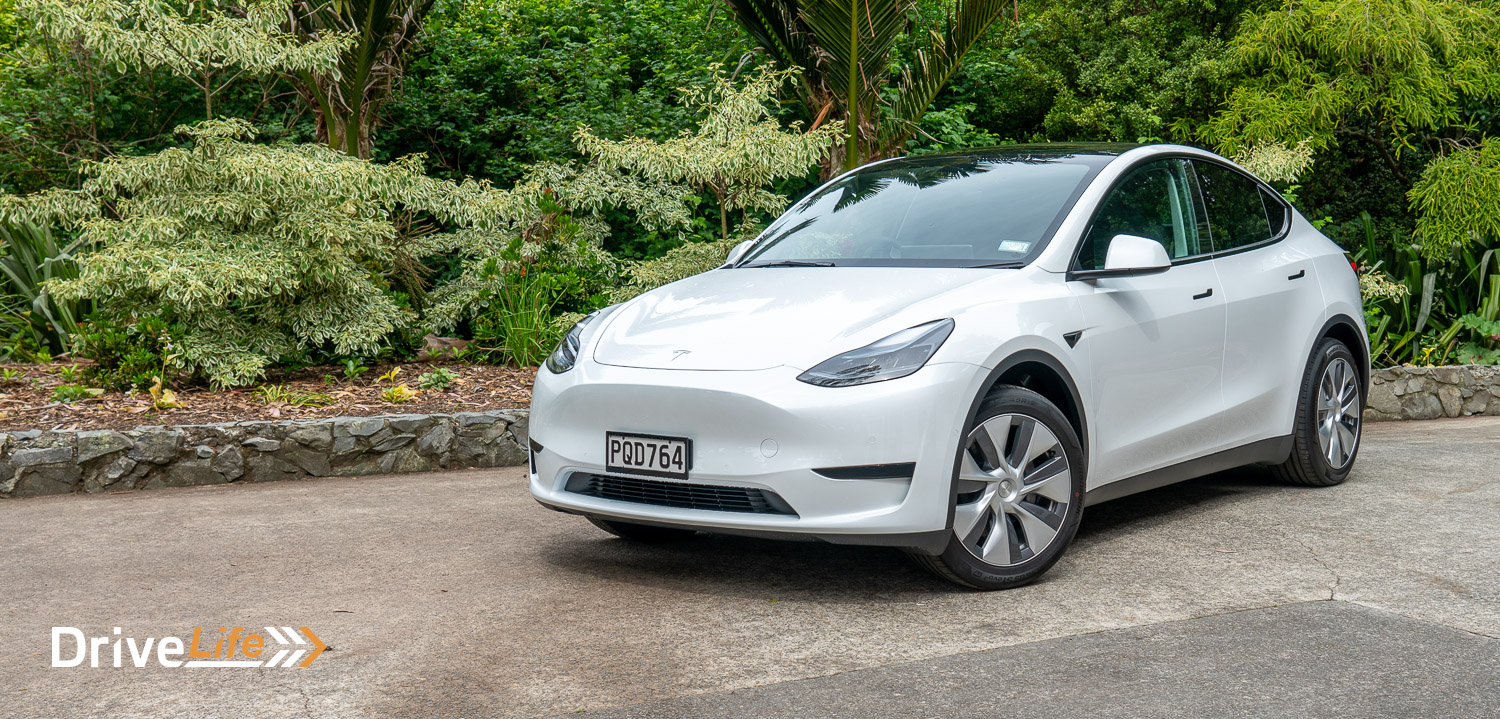
What’s The Interior Like In The 2022 Tesla Model Y?
If Apple was to design a car interior, you’d probably get the spitting image of the Tesla Model Y (and Model 3).
That’s to say, the cabin of the Model Y has a clean, minimalist design, with the tech as the focal point. Functionally, it feels like the interior has been designed by a software engineer, then finished by a designer. The whole cabin is oriented around the large centre screen, which controls nearly everything.
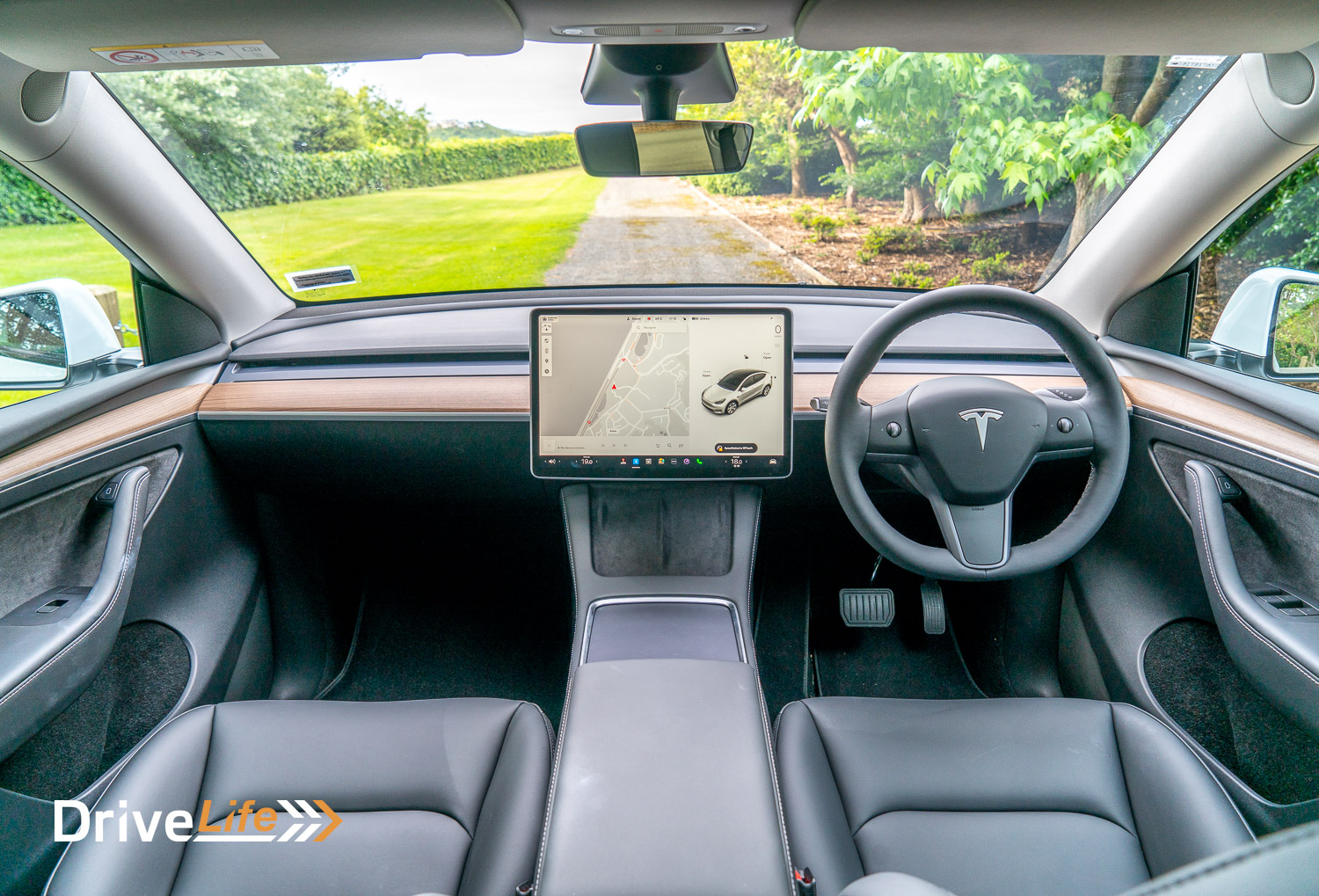
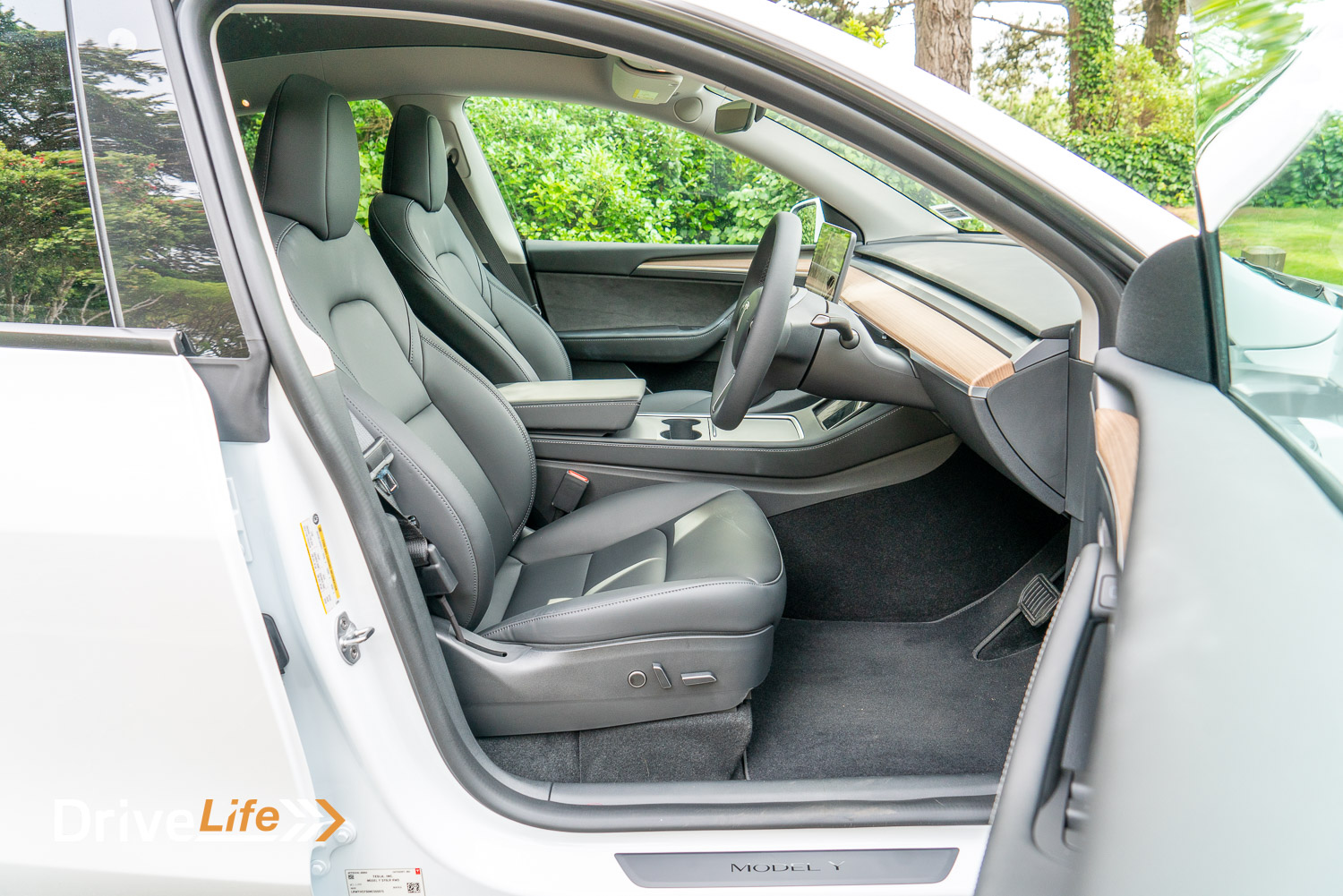
Minimalism is taken to the nth degree. The physical controls are pretty much isolated to the steering wheel or the doors, if you ignore the roof-mounted hazard light button and a couple of seat controls. Even the door handle has been replaced with a button, but there is a physical fail-safe integrated neatly above the door switches.
The textures, on the other hand, are more Scandi-chic compared with Apple’s usual industrial finish.
The entire dash is a large piece of imitation beechwood, with soft squdgy black material comprising the rest of the dash behind it. The centre console is matte grey plastic, meaning it’ll show fewer scratches compared with the piano black finishes in earlier Model 3’s.
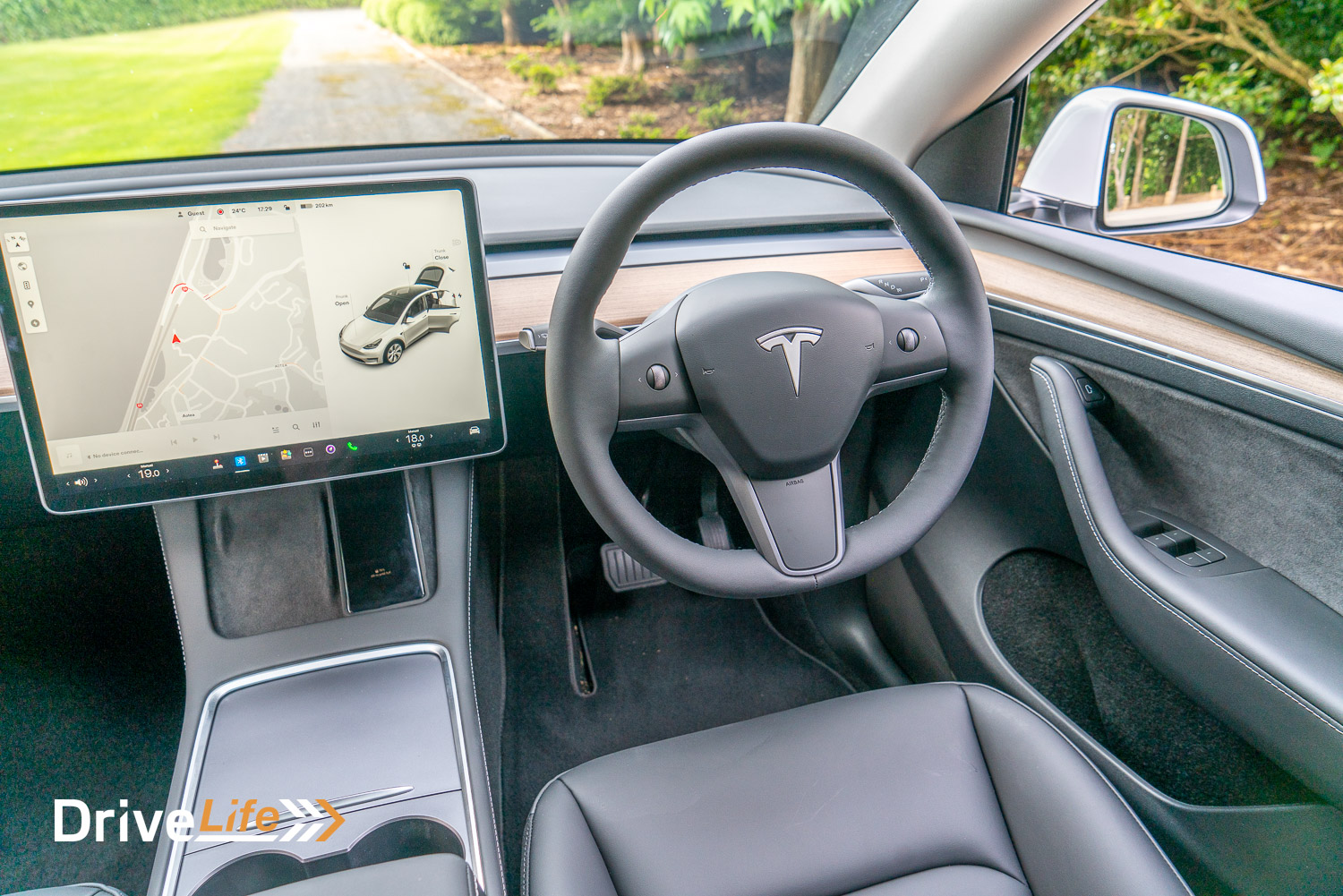
Like a true vegan, Tesla will tell you that they are one. Or rather, Tesla will tell you they dress their interior with vegan leather, which is a fancy way of saying synthetic leather. There’s also synthetic suede lining the door and the storage bins.
The perceived quality of these materials is reasonable too. It’s not $80,000 good, but it’s passable considering what you’re getting on the spec sheet. On that topic, build quality appears to have markedly improved since Tesla’s early days. Of course, many of these Tesla’s are still only a few years old, so time will tell if they stand up to use and abuse.
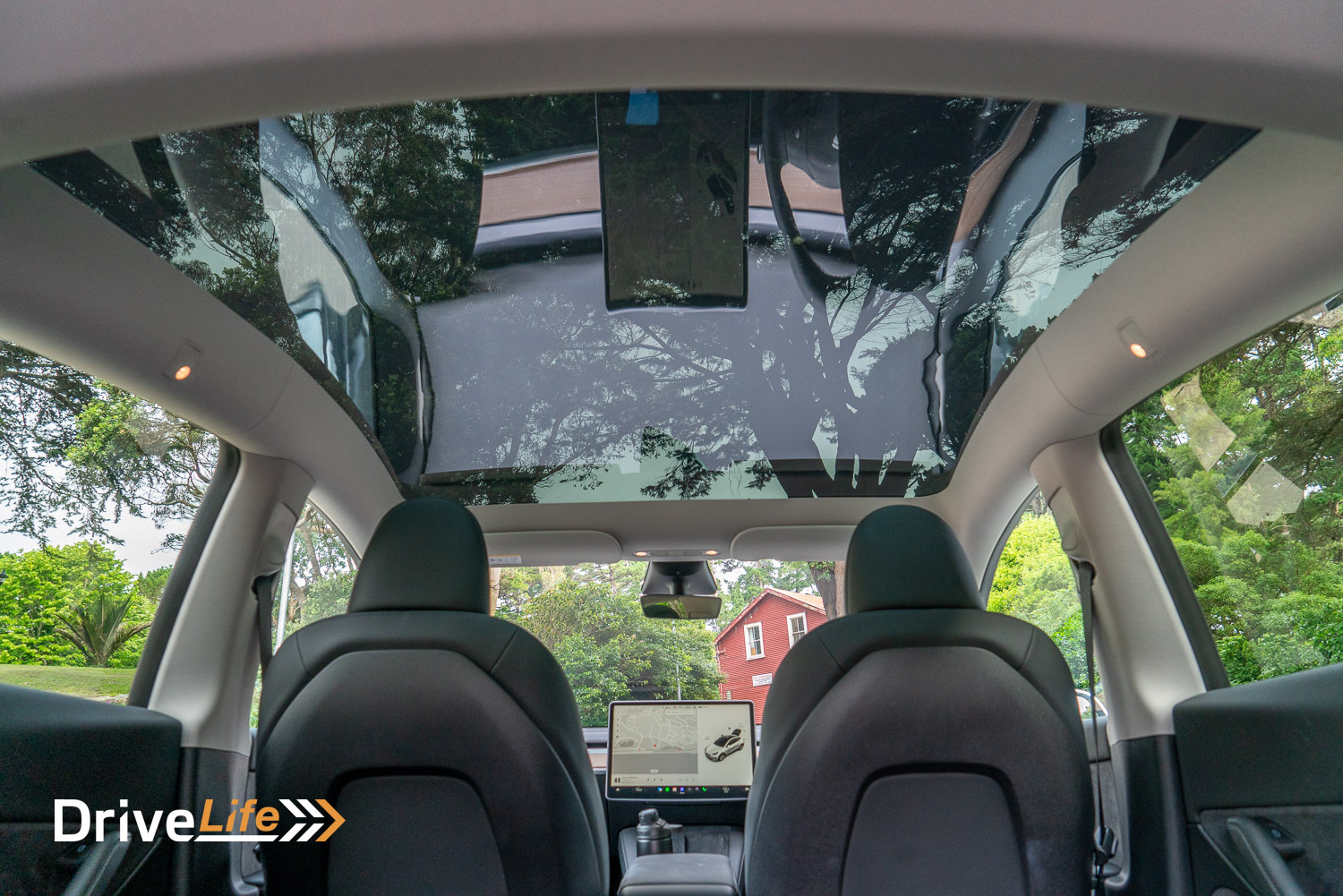
But out of all the design choices, one of the Tesla’s best qualities is the amount of natural light which pours into the cabin, thanks to the large glass roof on the Model Y. From the front seats, the outward visibility from the driver’s seat is like a car from the 1990’s, which is brilliant.
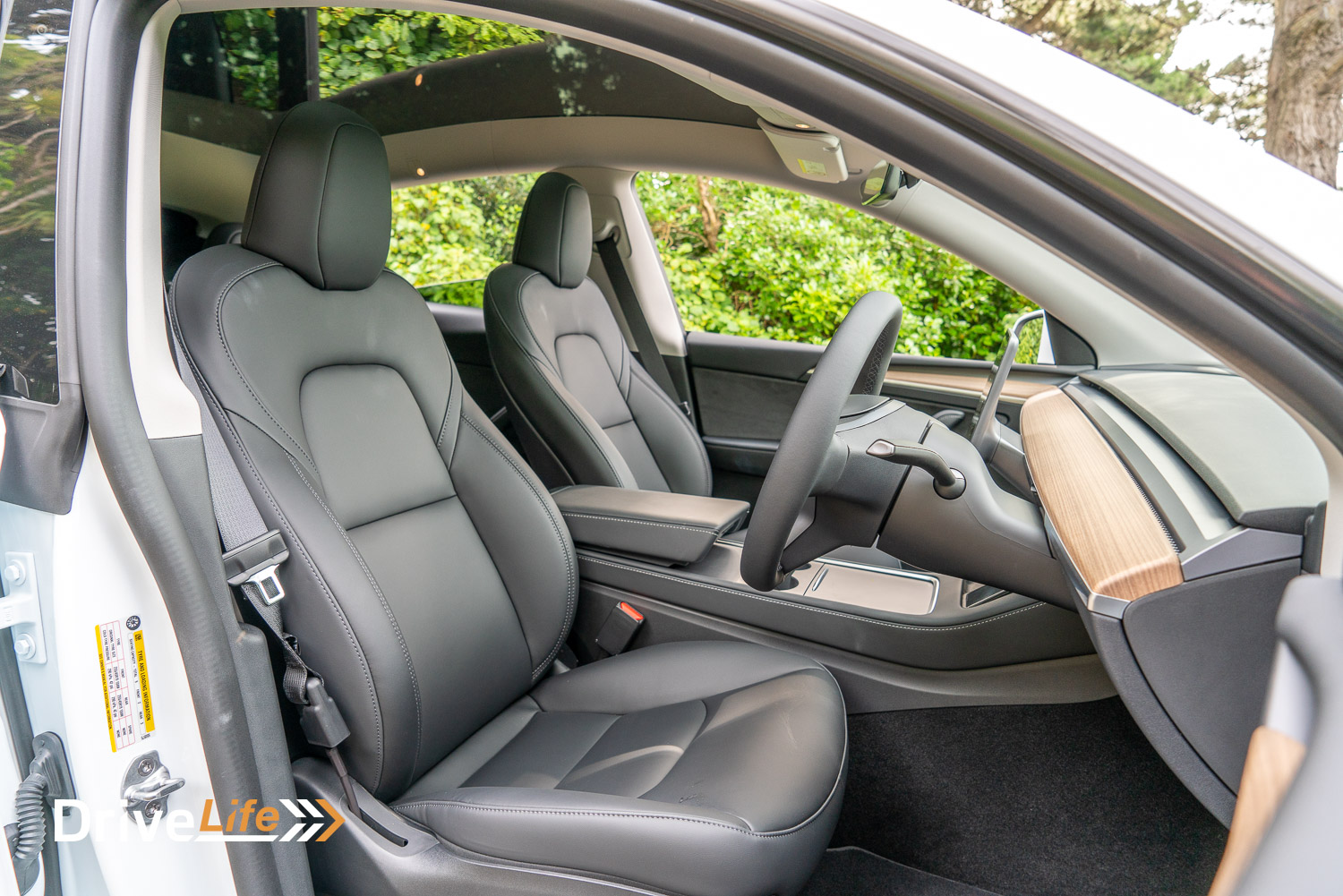
Speaking of seats, you’ll find yourself sinking a few inches into the front seats as Tesla has padded the heck out of these things. Beyond this, they could benefit from a tad more support in some areas, but otherwise they get a big tick in terms of comfort for daily use. You will notice the urethane-like quality of the vegan leather, but the upholstery does appear to be reasonably hardy.
Rear seat passengers have ample head and leg room. All seats are heated, including the middle seat in the back, which you don’t often see.
The Model Y’s boot space blows the competition away. According to Tesla, the Model Y offers 854L of space with the rear seats-up. I didn’t initially believe it, until I removed the false boot floor and realised how deep the storage is underneath. There’s also surplus space in the front, adding an extra 117 litres to the tally. Drop the rear seats, Tesla claims to give you 2,041L. Although one cannot often test such a claim, I have found third parties that’ll design an inflatable mattress to sit in the back of the Model Y, which is telling enough in my view.
Having managed to talk around the cabin, I should get to the focal point of the interior. That is, Tesla’s massive central infotainment and command screen. You certainly can’t miss it, because it’s huge and protrudes out from the dashboard. But also, you can’t miss it because it controls virtually everything.
Need to adjust the wing mirrors or the steering wheel? It’s on the screen. Adjust vehicle settings, like the regenerative braking levels? On the screen. No matter the question, the answer is on the screen. Even the speedometer is on the corner of the screen, which you can just catch with your eye. Personally, I think the Tesla could greatly benefit from a heads-up display.
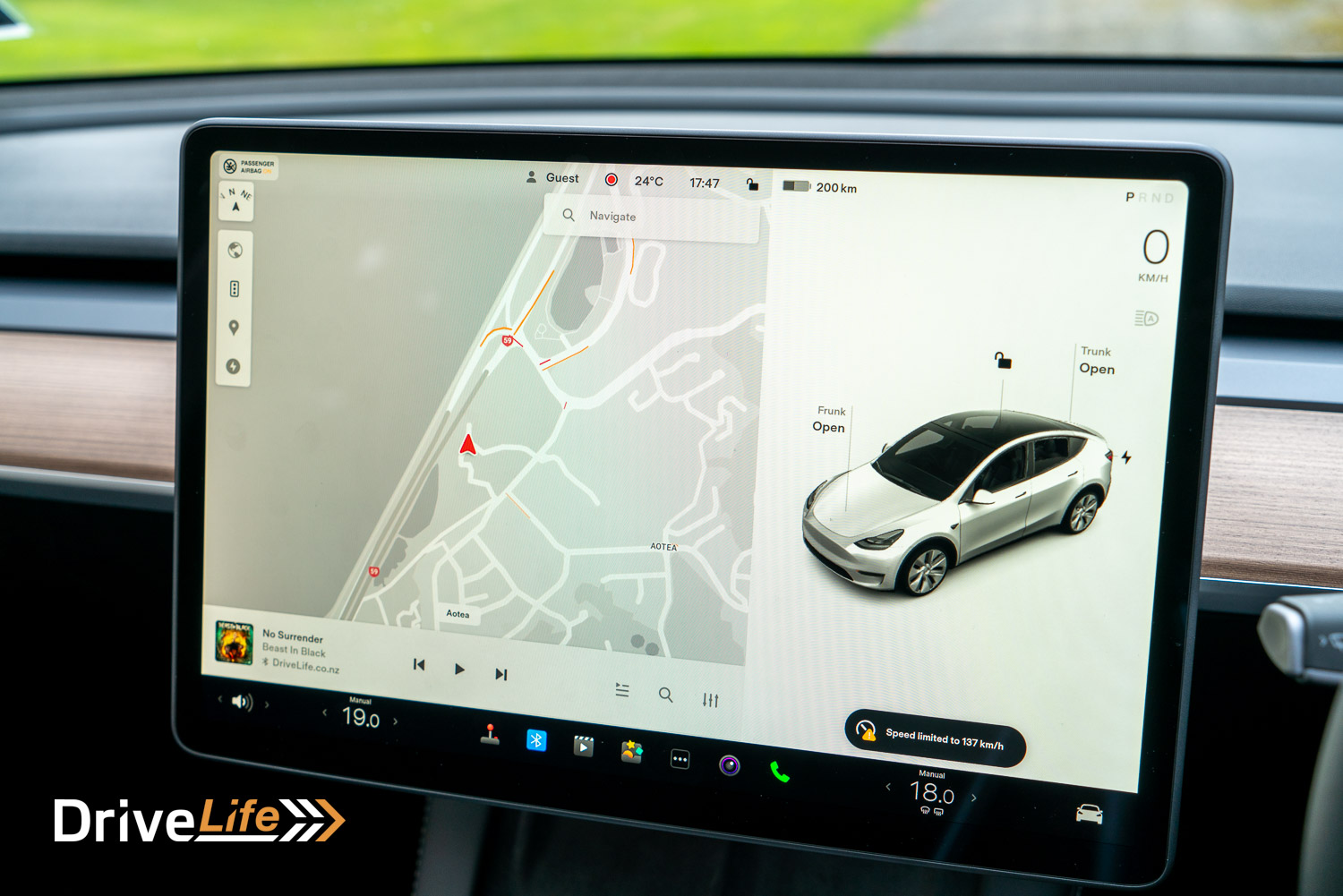
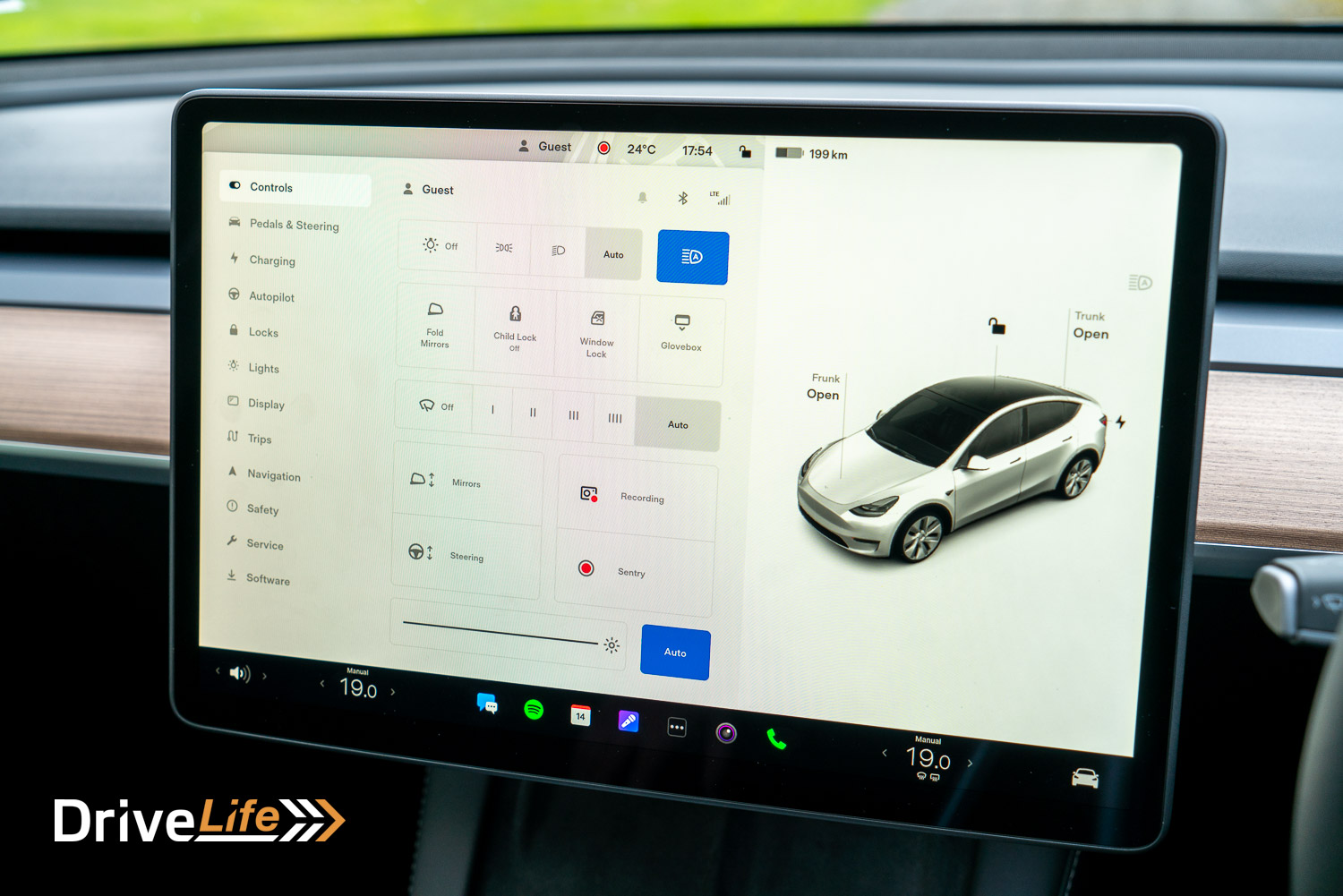
All that said, Tesla has put considerable resources into this command screen, and frankly, the results speak for themselves. This is probably one of the best infotainment systems available in the car market. The experience is like using a Tesla’s version of iOS or Android, being nearly as user friendly as using a smartphone. It’s fast, seldom lags and the screen has great resolution.
Of course, you can make the system lag if you demand too much from its processors. That’s also easier than you’d think, considering all the features Tesla’s programmed into it. After all, those processors need to power an entire car, as well as allow you to play with Tesla’s ToyBox or stream Netflix.
On that topic, there are some truly novel features included in Tesla’s vehicles. Many of these are well known about, including Emissions Testing mode (fart mode), the Light Show and Car-aoke. There’s also Sentry mode, which uses the exterior cameras to record any incidents when parked, and a dog mode, which will keep the air conditioning running inside the cabin when parked. It’s all rather impressive, especially so if you’re encountering it for the first time.
That said, I do struggle to see the purpose for many of the features, beyond showing them off to your mates. Sure, it’s cool that you can watch Netflix and sing along with your car, but how often will you use it? Besides, your kid in the back probably has their own device for long journeys, and most people I know only karaoke when drunk.
As I see it, these features contribute to system bloat. As Tesla supports the car with over-the-air updates, improving functions and occasionally adding features, how will the software hold up in the long-run? I suspect it may struggle to cope without supporting hardware.
I also have two functional criticisms with the approach of combining everything onto one screen. The first, is that it leaves little room for redundancy. Should the screen throw an unexpected kernel, you’d lose the ability to do anything in your Tesla. Sure, you could argue this with any modern vehicle, but at least other brands will still let you look at your speedo, should the infotainment fail. The second criticism is the usual complaint of having few fixed controls, meaning you need to divert more of your attention to the screen when driving. Even though Tesla’s interface is very competent, it can be difficult to use while driving. Even I’ll admit I found myself getting distracted, more than I usually would.
Although, I suspect many buyers don’t give a toss about either of these concerns. They’ll just be happy the Tesla can fart-on-command. Tesla fans would probably fart in your general direction for raising these concerns too.
On the audio front, the sound system is of decent quality, but all that glass inside the Tesla does come back to bite it. All the glass gives the cabin a punishing acoustic profile, which you might notice with some songs or during a hand-free phone call.
I shouldn’t be too harsh on the Tesla, because car acoustics are generally compromised. However, this is a simple observation that some do it better than others. Tesla is definitely amongst the ‘others’ in this case.
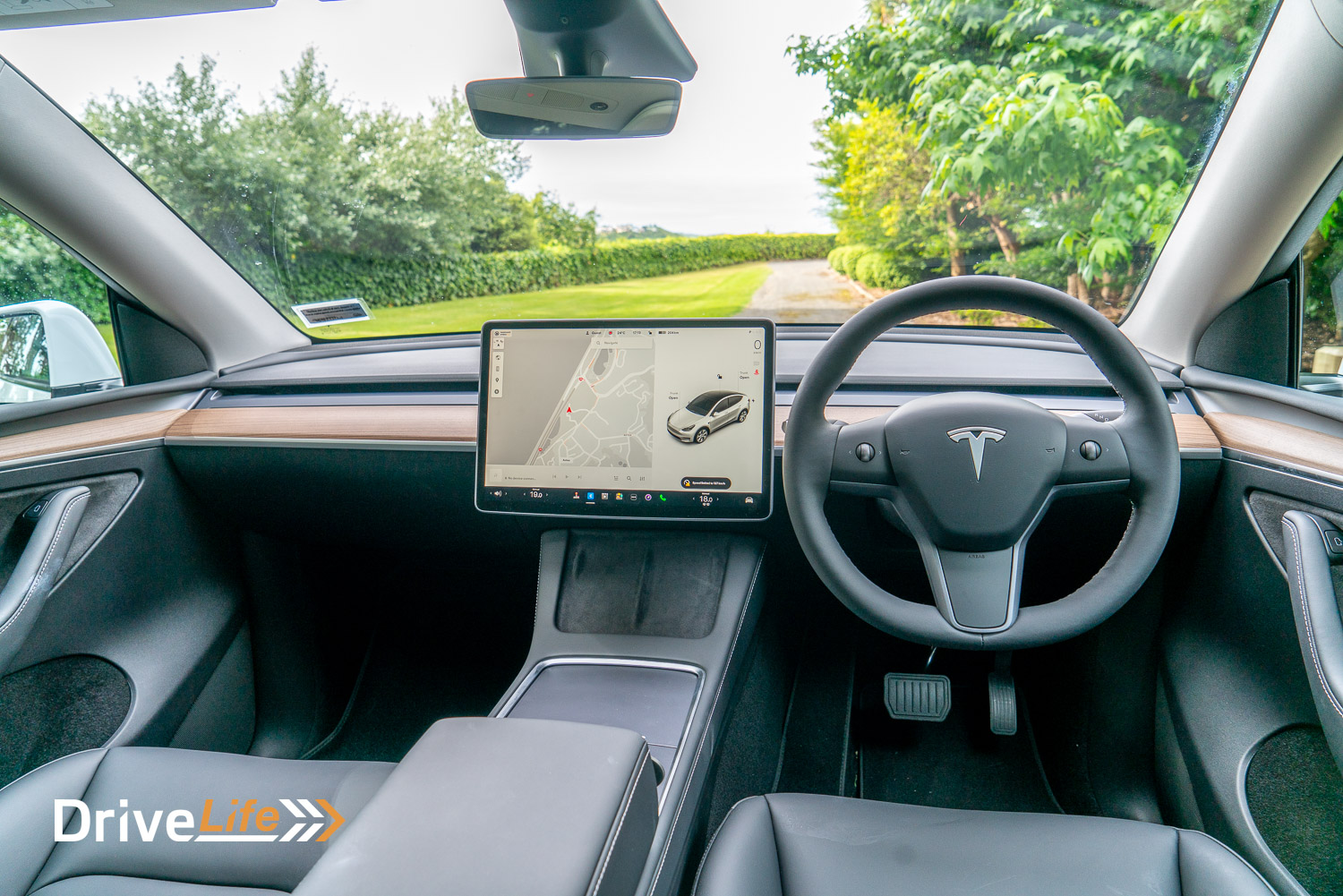
What’s The 2022 Tesla Model Y Like To Drive?
If there’s anything we’ve learnt about Tesla in the past decade, it’s that the automaker does two things exceptionally well.
The first is technological innovation. Tesla has pantsed the automotive industry on several fronts when talking technology, which has given the brand a first mover advantage.
The second, arguably, is misleading marketing. Granted, that’s probably got less to do with Tesla’s marketing and more to do with the grandiose claims made by the commander-in-chief on his newly acquired social media platform.
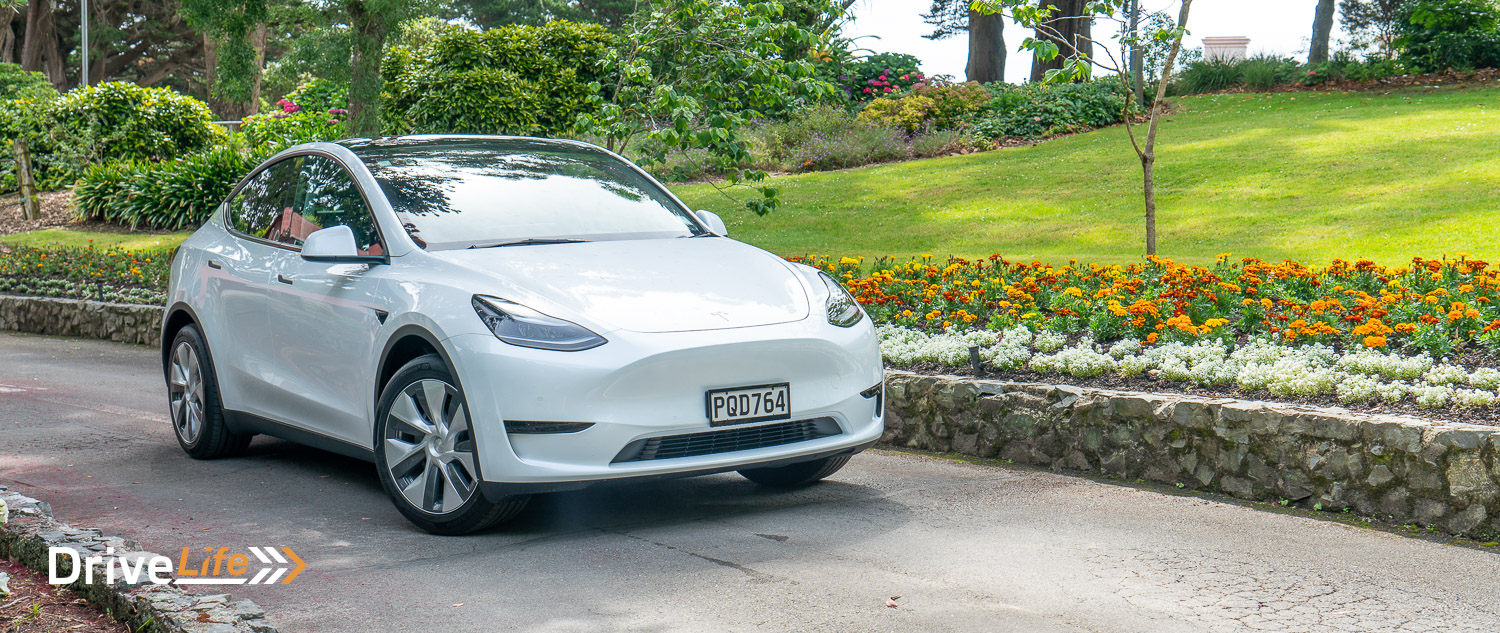
I bring up both of these points, because Tesla leans into this identity when marketing their vehicles. They bring technological innovation, and the grand promises of more. I relate this to when a professional athlete brags about their invincibility. Sure, their claims may be non-sense, but they’ve got enough accomplishments behind them that many supporters will just chug that kool-aid.
Anyway, Tesla does bring their droves of tech to the table, and they’ve set several new technology benchmarks for the industry. But, plenty of misconceptions exist about the brand, many of which only seem to benefit them. Undoubtedly, this is in-part fuelled by the Teslarati – Tesla’s fanboys and girls – who are perhaps one of the most annoyingly devoted fan bases on the internet.
As a result, there are several ordinary people I’ve encountered that seem to believe that these Tesla’s can drive themselves (spoiler alert, they can’t). I also had at least two people ask me whether you can press a button inside the Tesla which would make it faster than anything on the road. Another fallacy, of course.
So, if we ignore all the hype and hearsay, what is this “entry” level Model Y, actually like to drive?
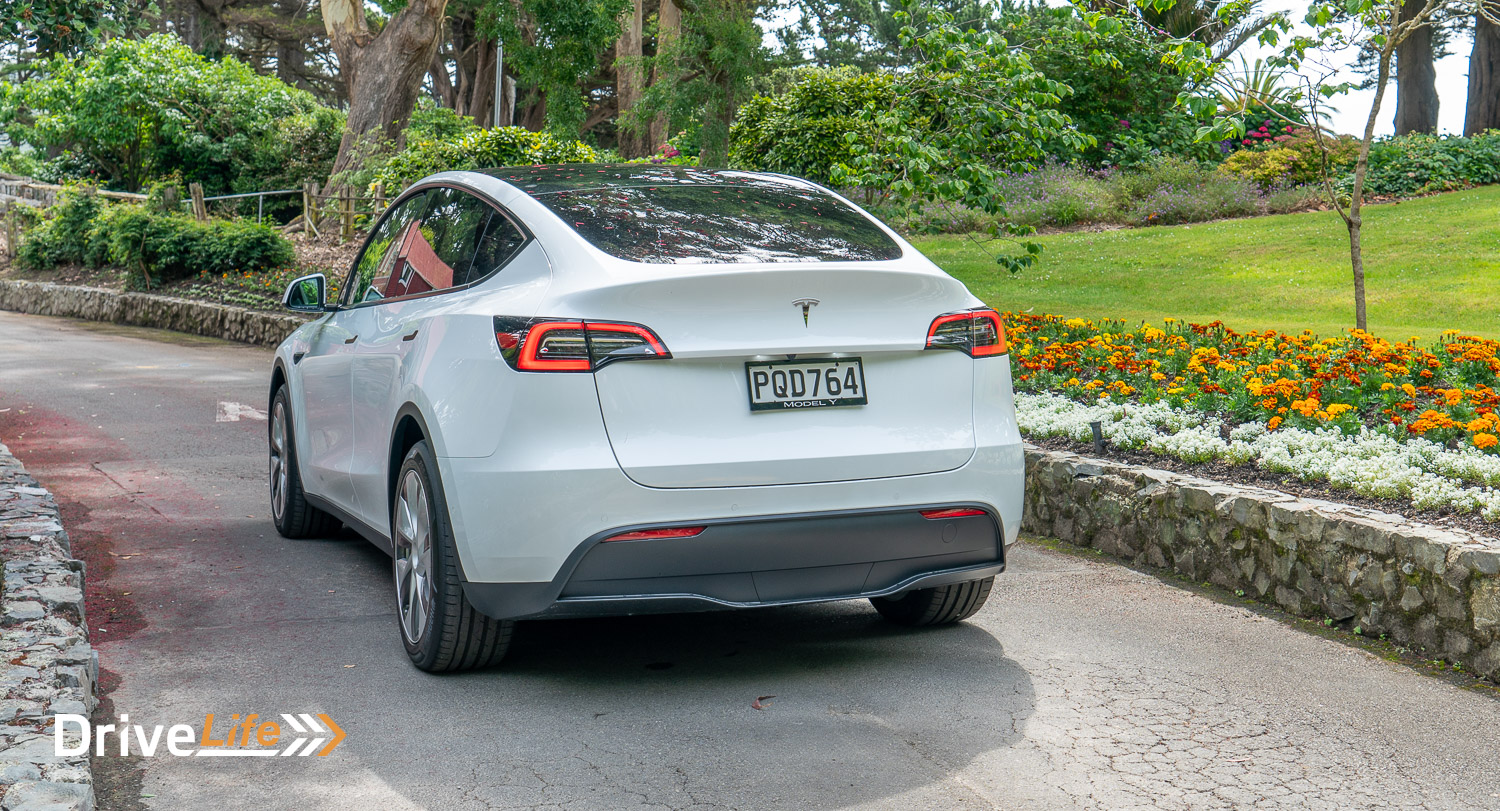
Well, it’s quite pleasant actually. For day-to-day commuting, EV’s are good vehicles. The electric motors are smooth, (mostly) silent, and all the torque is available up front, meaning you’ll get a good shove in back if you put your foot down.
This Model Y isn’t especially fast being the entry level car, producing 220kW of power and 420Nm of torque, but carrying 1909kg of weight. Regardless, it’ll still leave many mid-size SUVs for dead.
The Tesla slippery body design also means it has wind noise well-suppressed in the cabin, but you will notice the tyre noise, which the Hankooks do generate a fair amount of. It’s also reasonably energy efficient. We managed to get an energy consumption figure of 16.4 kWh/100kms, which is quite a bit over Tesla’s claimed energy consumption figure of 13.2 kWh/100kms. However, this is still a relatively good result for an EV of this size.
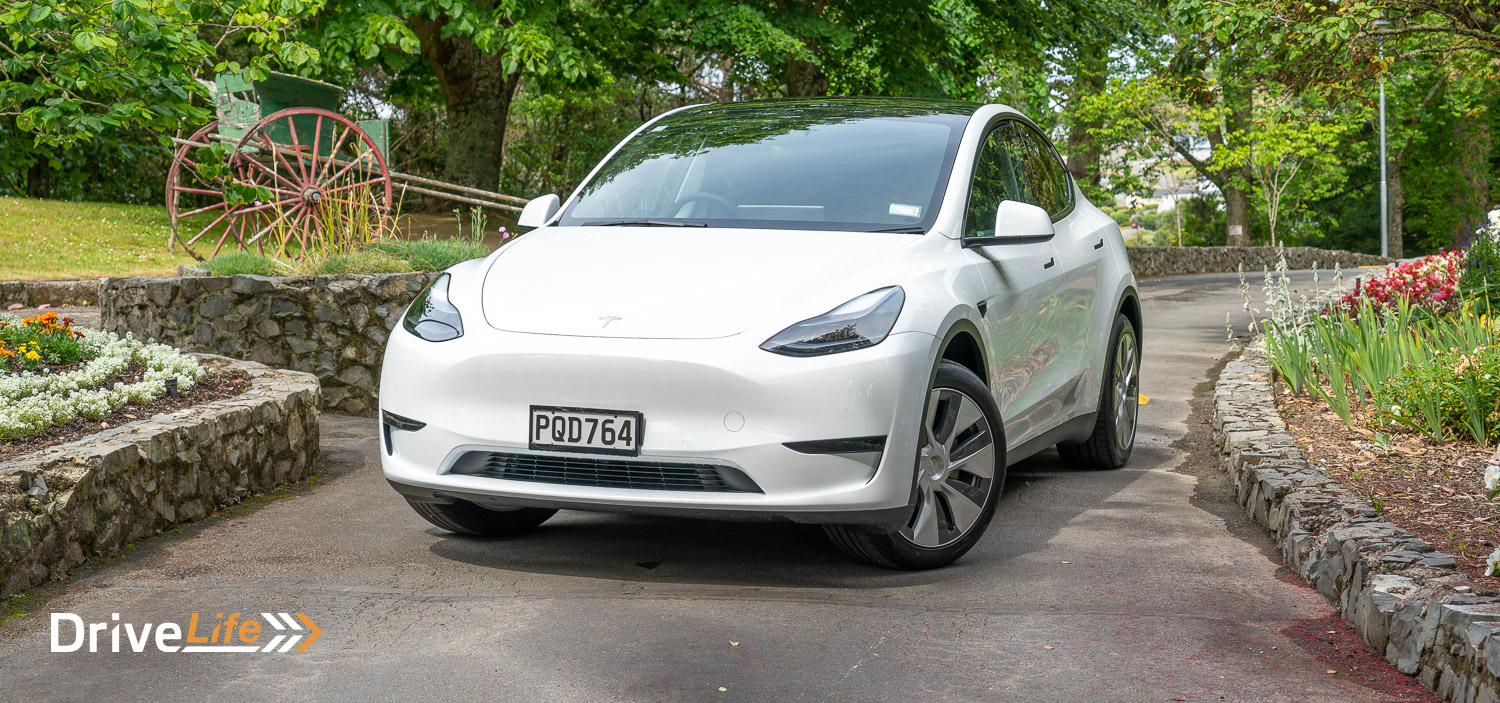
The downside is that at this stage of their development, many EVs are homogeneous products. Many EV’s are designed as skateboard platforms, meaning the batteries, and therefore the weight is distributed across the floor. EV motors are hard to differentiate in terms of how they produce their performance too. From this perspective, the driving experience isn’t particularly unique.
However, as the EV market has expanded, we’ve been starting to see that not all EV chassis are created equal. This, unfortunately, is where the Model Y isn’t quite as competent as some of its fresh-faced competitors.
The Model Y’s Achilles heel is its ride quality. It’s noticeably jiggly when the road becomes less than smooth. The Hyundai Ioniq 5, by comparison, has superior ride quality to the Tesla. The Model Y’s handling is also mixed. It’s competent at suburban speeds, but the Tesla’s body control at a high-speed isn’t great. The Kia EV6 outperforms the Tesla here.
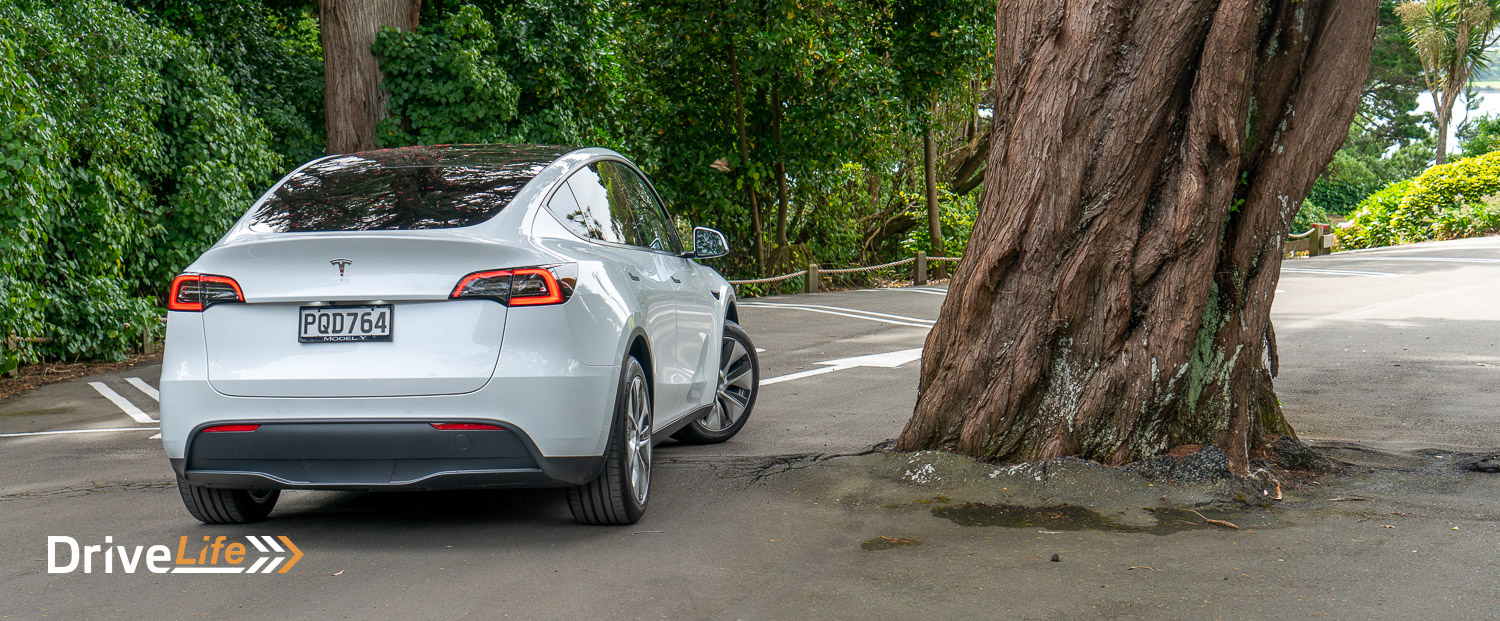
To be clear, neither the ride quality or the handling of the Tesla is bad. But it’s a simple case that competitors now do it better.
So, the Model Y isn’t the most talented when it comes to vehicular basics. But, Tesla is a company built by software engineers, and the tech is exactly where the development dollars have been devoted. The on-board tech is what makes the Tesla Model Y easy to live for many, that many buyers will probably forgive the average handling and ride quality.
Tesla is probably the first car company to explore the eco-system model. I’m not talking about the stuff every manufacturer does, with dealerships and servicing. Instead, I’m referring to smartphone connectivity, payment solutions and having their own charging network.
Download the Tesla app, and your smartphone can become a soft-key. You’ll gain a litany of features, stored right in your pocket. You can unlock, start the car and even control other accessories like opening the windows, opening tailgate(s), checking the tyre pressures and even honking the horn. The Tesla app also has a store, which allows you to buy software upgrades or buy physical accessories for your vehicle.
Roll up to a Tesla Supercharger, and the charger will recognise your vehicle once plugged in, and begin to charge. The Tesla app stores your bank cards payment information, meaning you get billed directly. There’s no need to fluff about with third party apps, or plastic dongles – it’s simply set and forget. Unfortunately for New Zealand buyers, there are only 12 Supercharger locations nationwide, meaning the advantage for buyers is limited compared to say, California, which has 323 locations so far.
With all the tech connectivity, Tesla has been able to rethink the starting procedure. Once unlocked, the Tesla is pretty much ready to go. No need to press a start button, just select your gear and off you go. It’s dead simple, really.
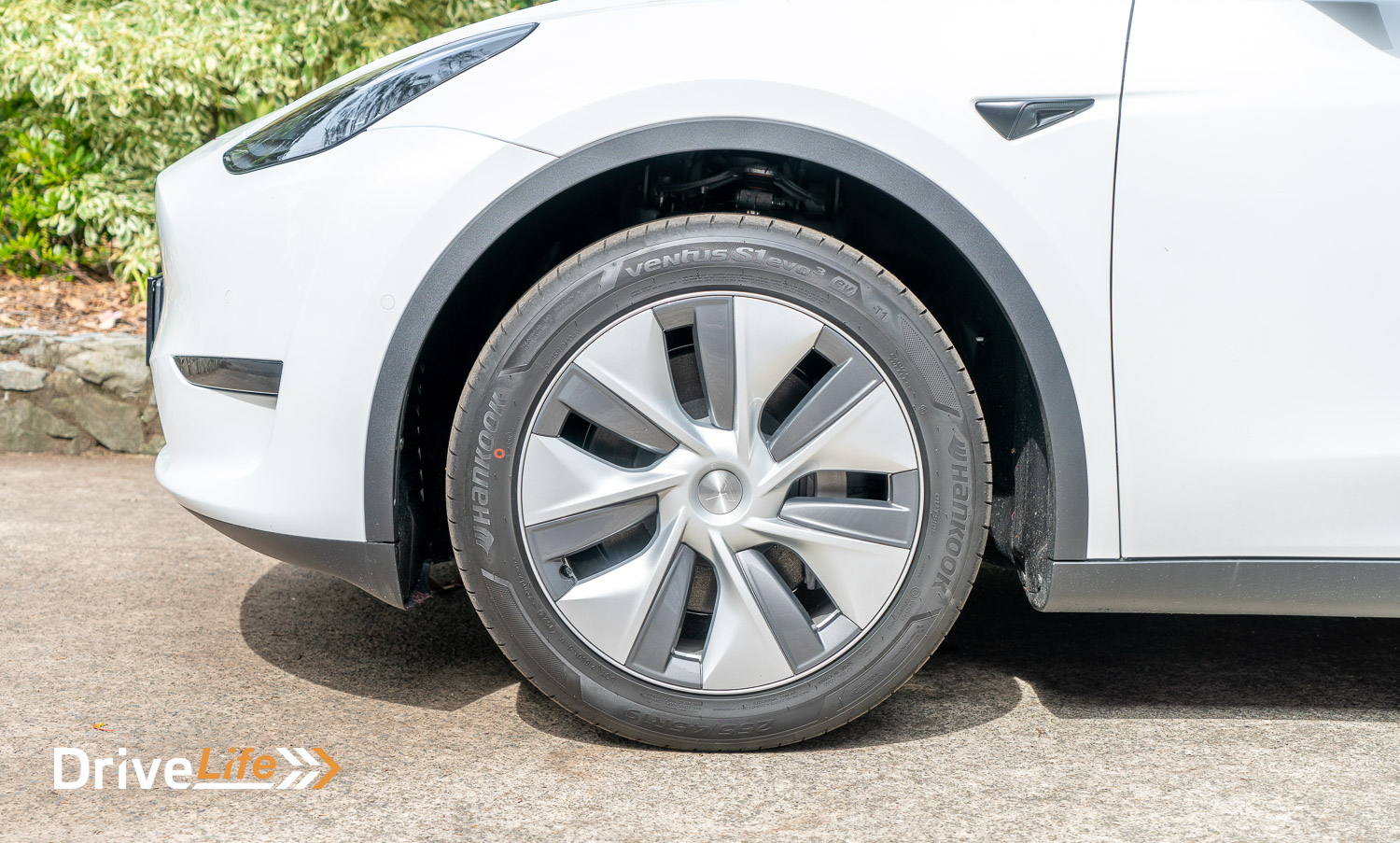
Then, there’s Tesla’s infamous “Auto-pilot” software, which is their catch-all term for Tesla’s drivers’ assistance technology. As standard, all Tesla’s come with some form of Auto-pilot.
In standard form, the system offers adaptive cruise control and auto steering, otherwise known as lane keep assistance. For an extra $5,700, you can upgrade to Enhanced Auto-pilot, which enables Navigate on Autopilot, Auto Lane Change, Autopark (self-parking), Summon and Smart Summon (which, according to Tesla, will navigate the car through more complex environments, to come to your position).
Finally, there’s Tesla’s “Full Self Driving Capability” “or FSD. It adds Traffic Light and Stop Sign Control, but essentially, all it is, is a promise from Tesla that they’ll give you Self-driving, or “Autosteer on city streets” once they’ve finished it. For this privilege, you’ll pay $11,400.
Let’s cut through some of the BS for a minute. Tesla’s Auto-pilot is considered Level 2 vehicle automation software by SAE International. For context, there are 5 levels, with Level 5 being fully-automated driving. The fact of the matter is that no car can drive itself, and Tesla has drawn the ire of German and Californian lawmakers for the naming of “Auto-pilot”. Also, the unfortunate reality is that Level 5 full self-driving is undoubtedly a long way away for any manufacturer. Even Tesla’s patron saint, Mr Musk himself, has admitted that full self-driving software is harder to develop than he expected, despite repeated inaccurate predictions over its readiness.
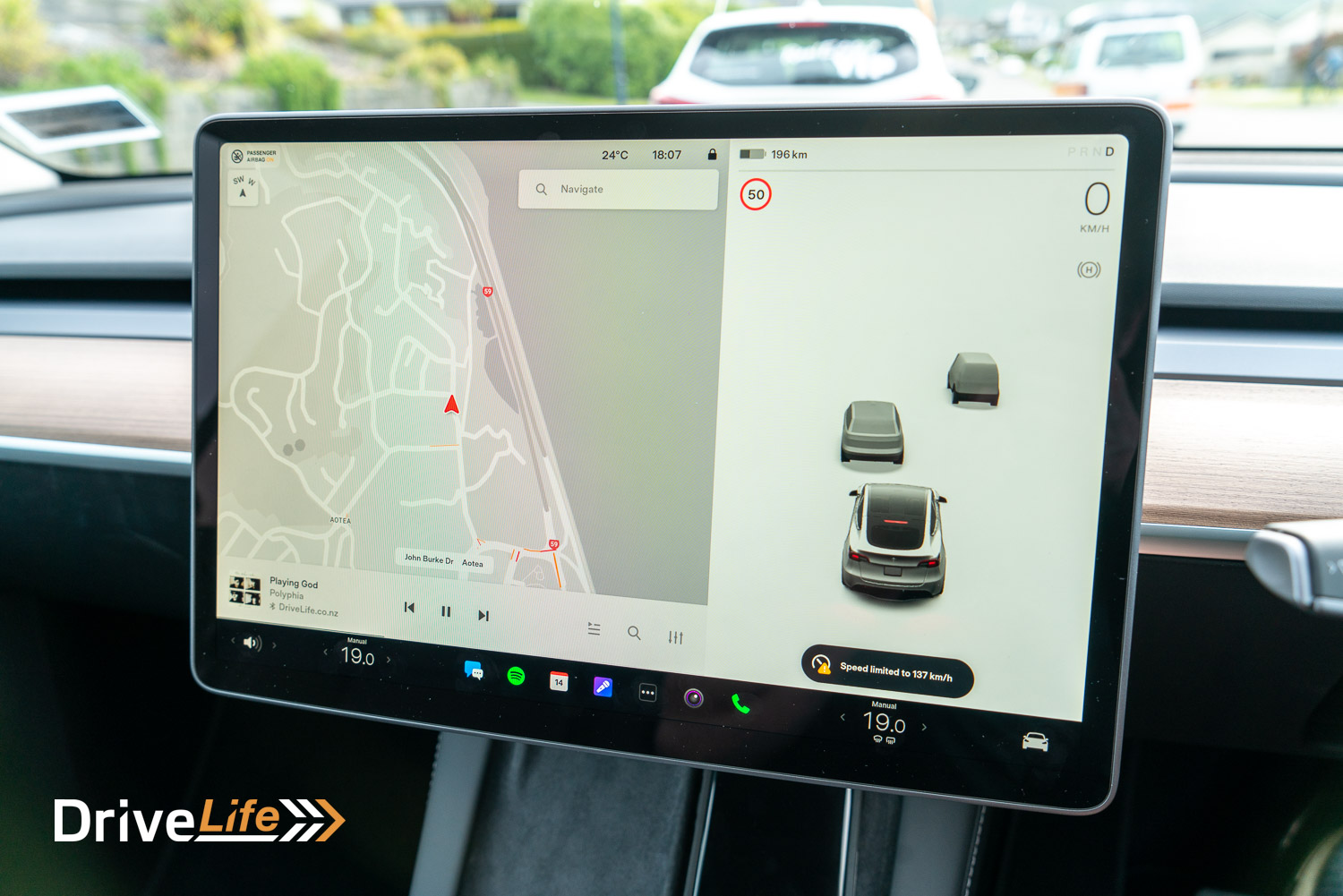
Whatever side you take on the matter, Tesla is one of the best in New Zealand when it comes to today’s drivers’ assistance technology.
The adaptive cruise is excellent, but in particular, the auto-steering software is excellent, keeping you centred with respectable accuracy. There are only a handful others which can match it. Tesla’s system also allows you to keep your hands off the wheel for much longer than competitors, before reminding you to take hold again.
I didn’t get the opportunity to test Smart Summon, in part, because I was nervous about any potential conversation with insurance adjusters had it failed. On this topic, I consider the main benefit of the Enhanced Auto-pilot package is the Auto Lane Change and Auto Park software, but these aren’t essentials. I’d be happy keeping the $5,700, to be honest.
I wouldn’t consider the FSD package, because at this stage, you’re nearly giving Tesla a donation. There’s no guarantee that the software will work in the near future, and it’s unclear whether the existing hardware on the car will be compatible with the end product. Until Tesla guarantees this, I’d steer clear.
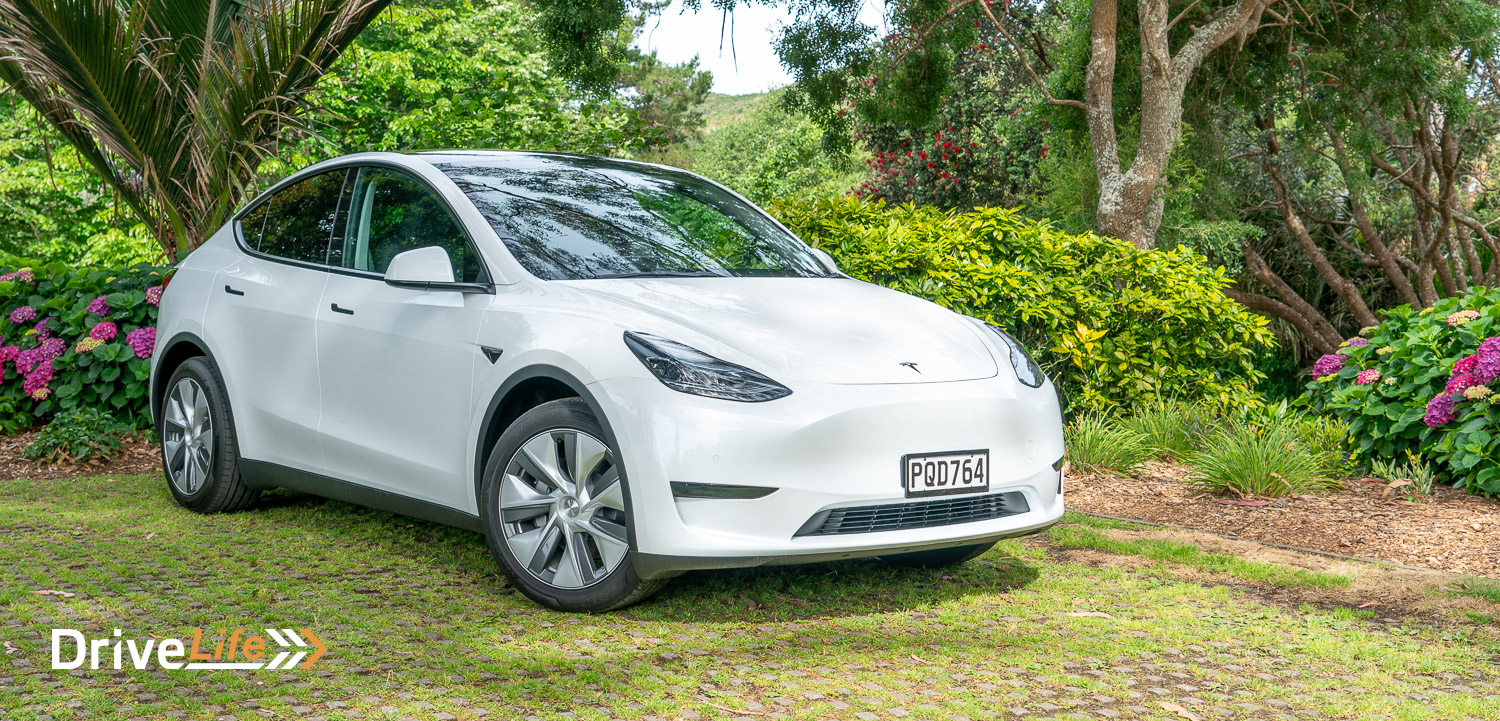
2022 Tesla Model Y – Specifications
| Vehicle Type | Medium size SUV EV |
| Starting Price | $77,963 |
| Price as Tested | $83,663 |
| Engine | 60kWh battery with single electric motor |
| Power, Torque kW/Nm | 220/420 |
| Transmission | Single speed fixed gear |
| Spare Wheel | Tyre repair kit |
| Kerb Weight, Kg | 1,909 |
| Length x Width x Height mm | 4751 x 2129 x 1624 |
| Boot Space / Cargo Capacity, Litres (seats up/seats down) | 854/2,041 (+117 Front Trunk) |
| Energy Economy, kWh/100km | Advertised Spec – Combined – 13.2 Real-World Test – Combined – 16.4 Low Usage: 6-10 / Medium Usage 11-19 / High Usage 19+ |
| Towing Capacity Kg, unbraked/braked | n/a |
| Turning circle metres | 12.1 Small: 6-10m / Medium 10-12m / Large 12m+ |
| Warranty | 4 years/80,000 km Basic Vehicle warranty 8 years/160,000 km Battery & Drive Unit |
| Safety information | ANCAP Rating – 5 stars Rightcar.govt.nz – 5 Stars |


